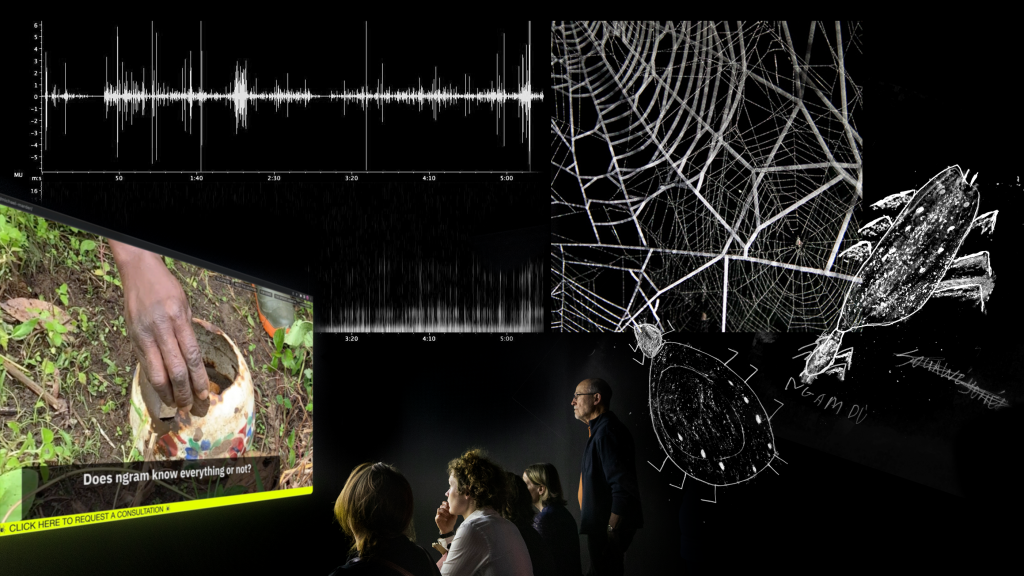

...

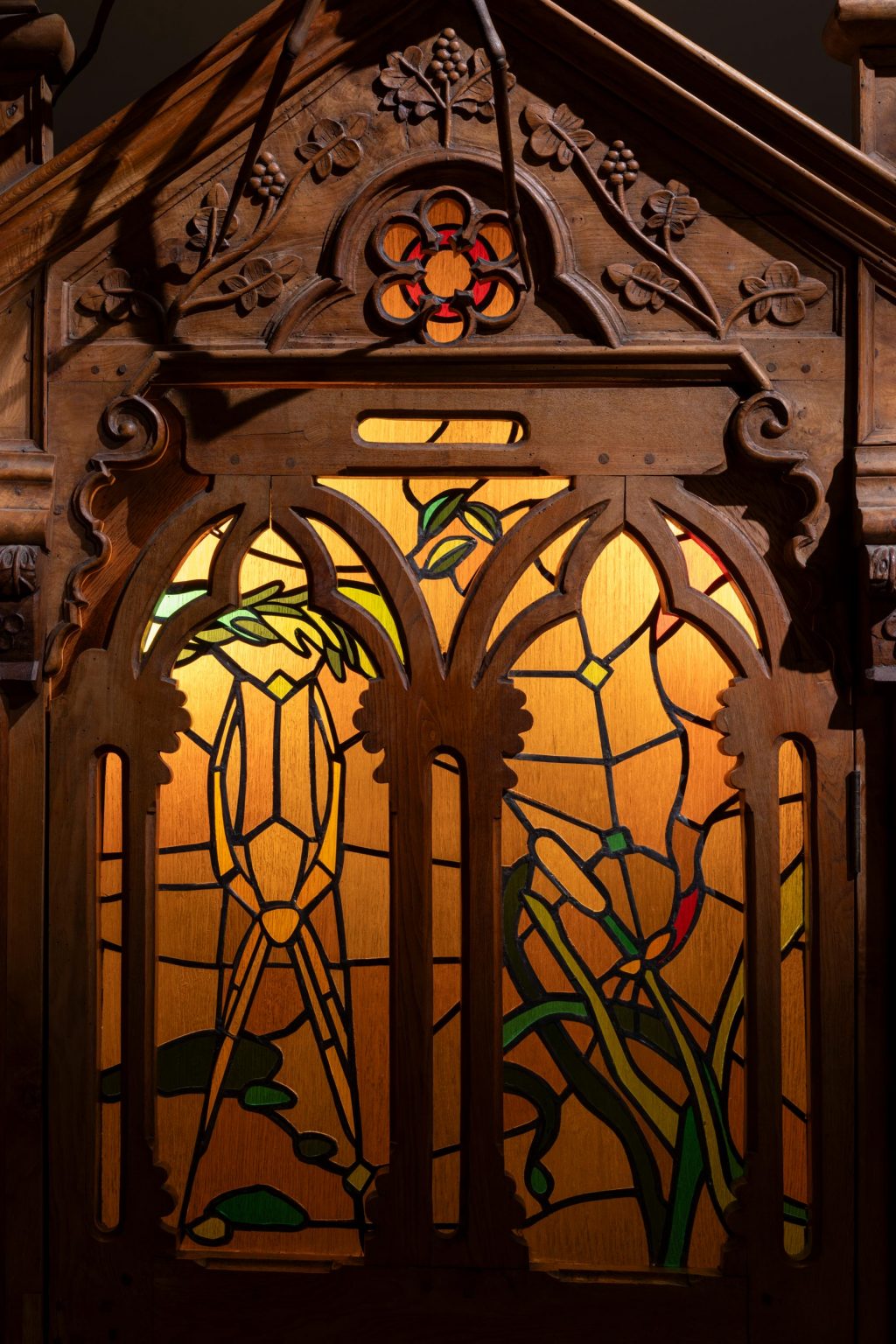
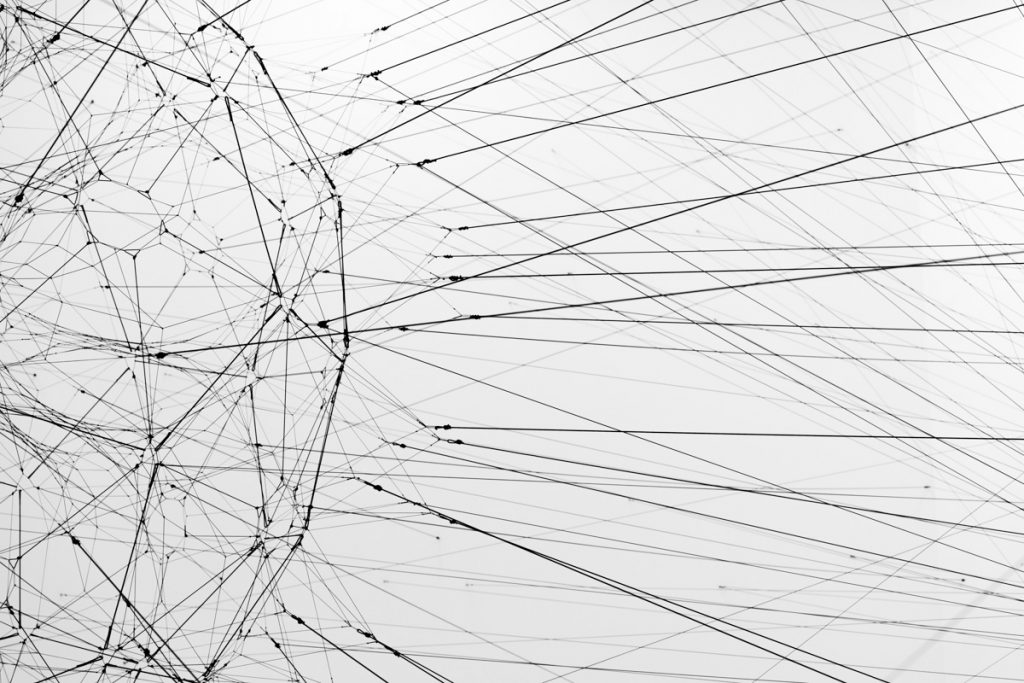
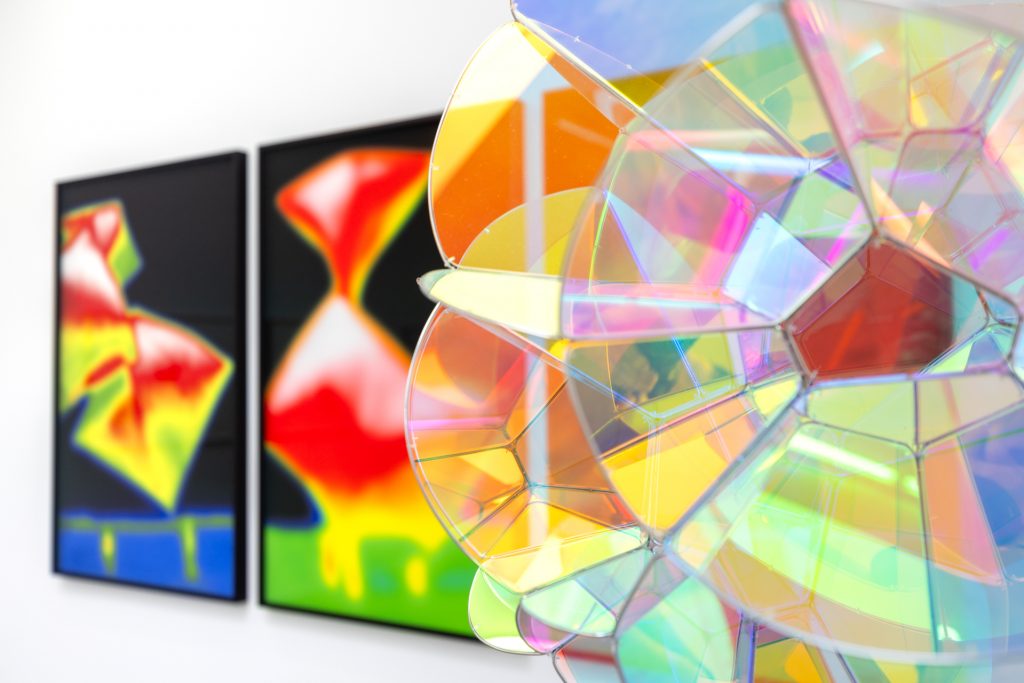
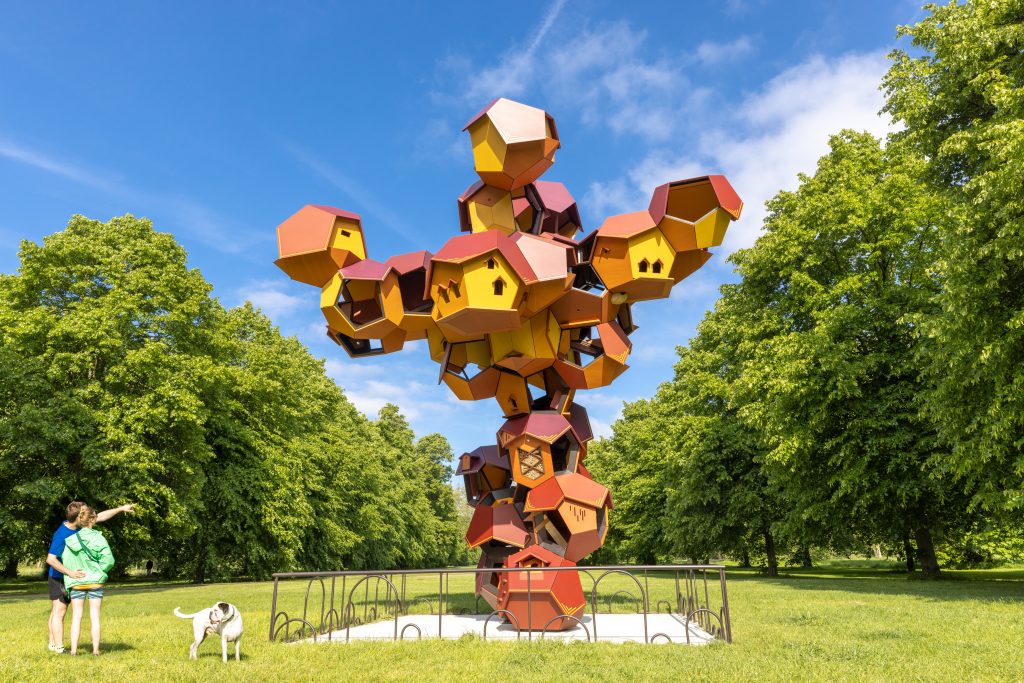
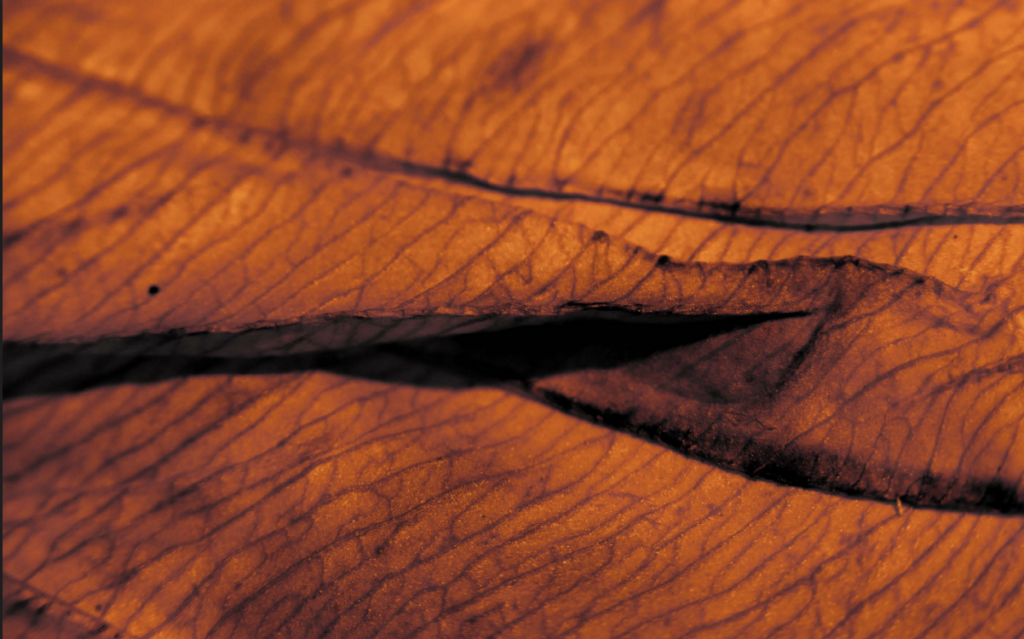
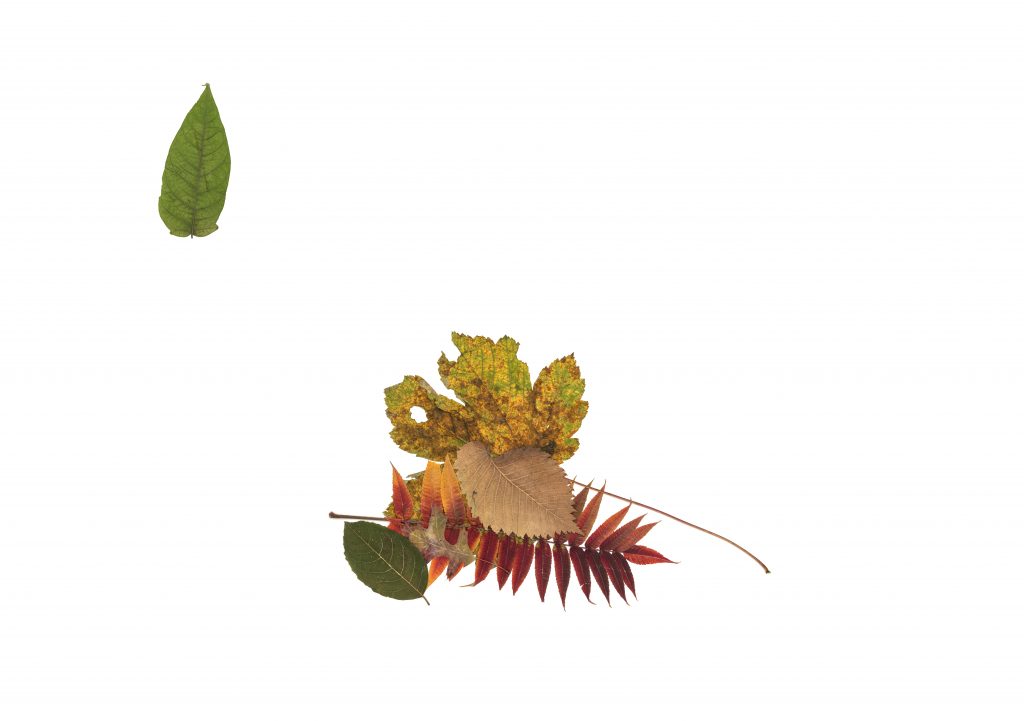
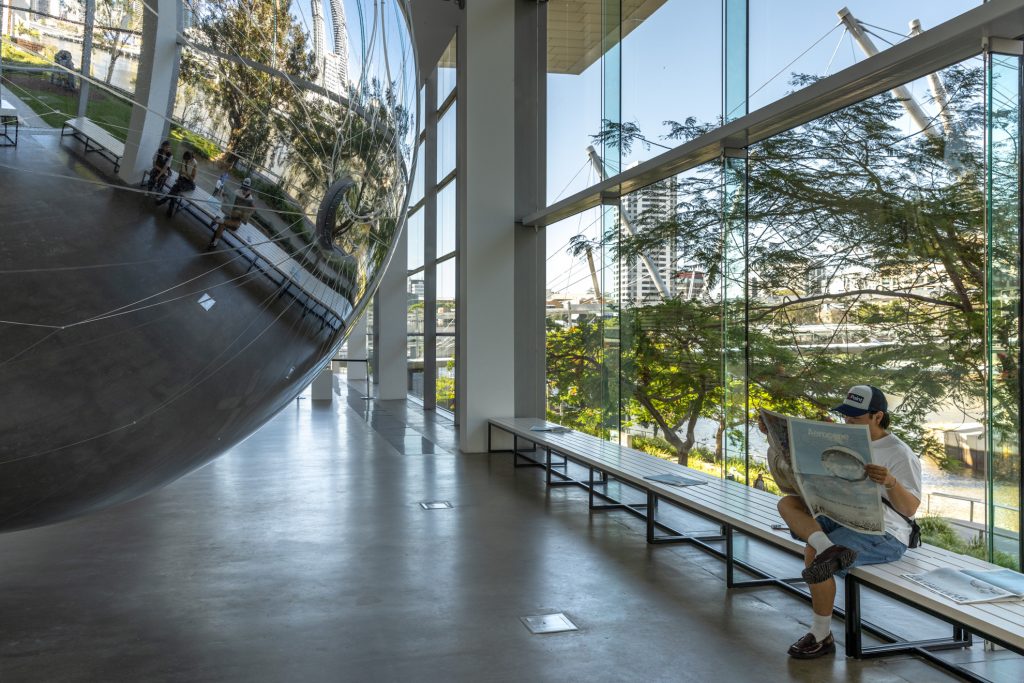
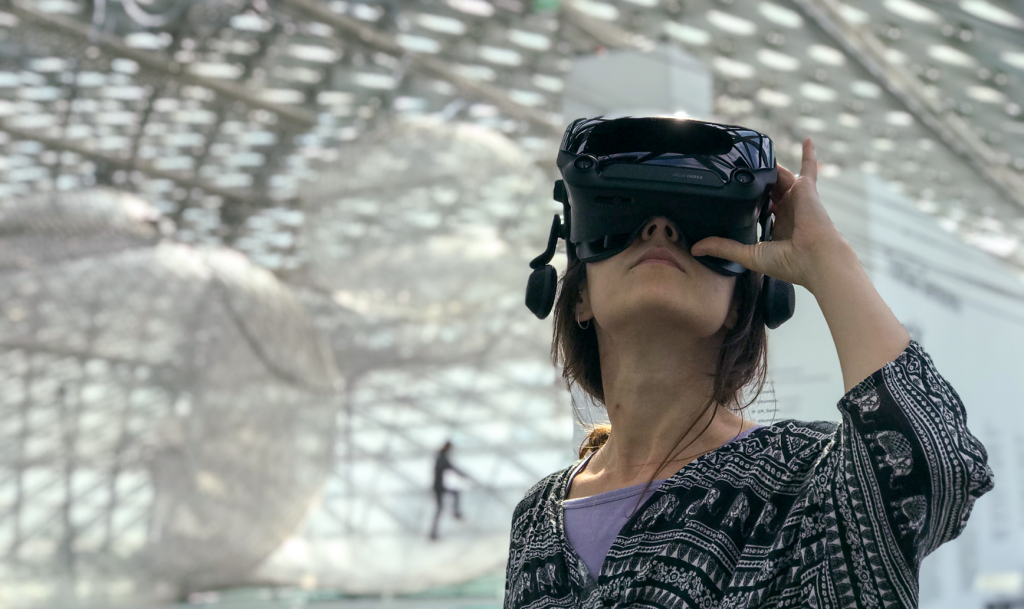
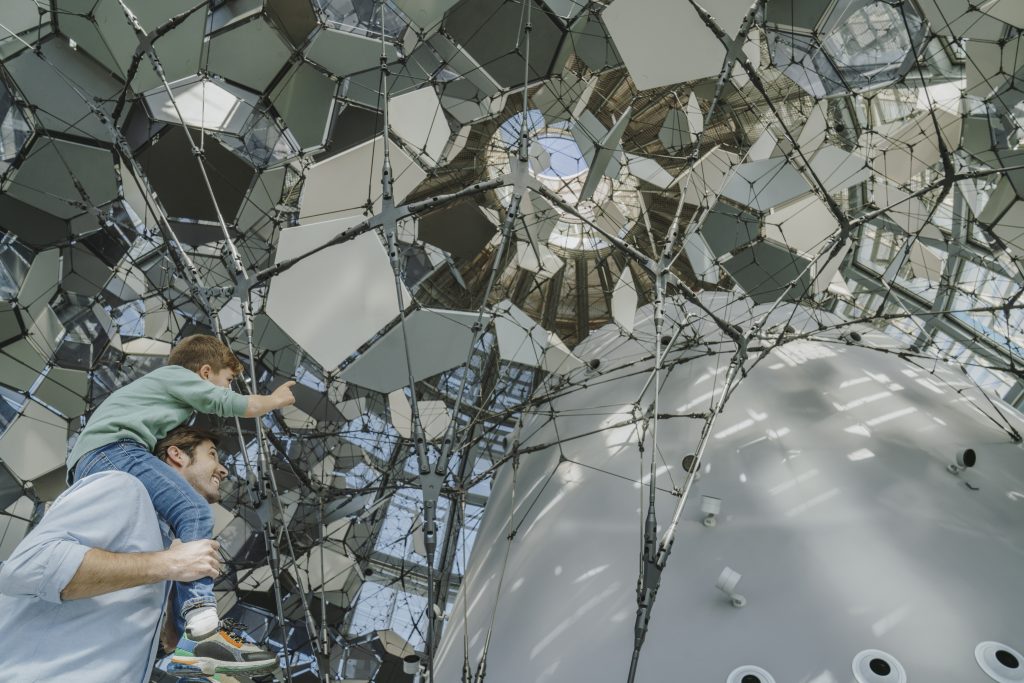
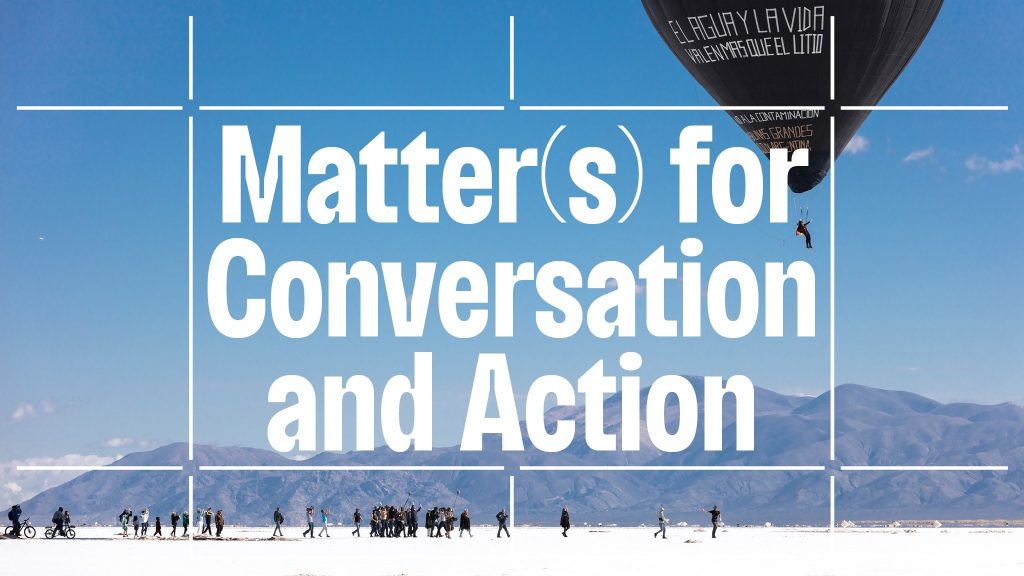
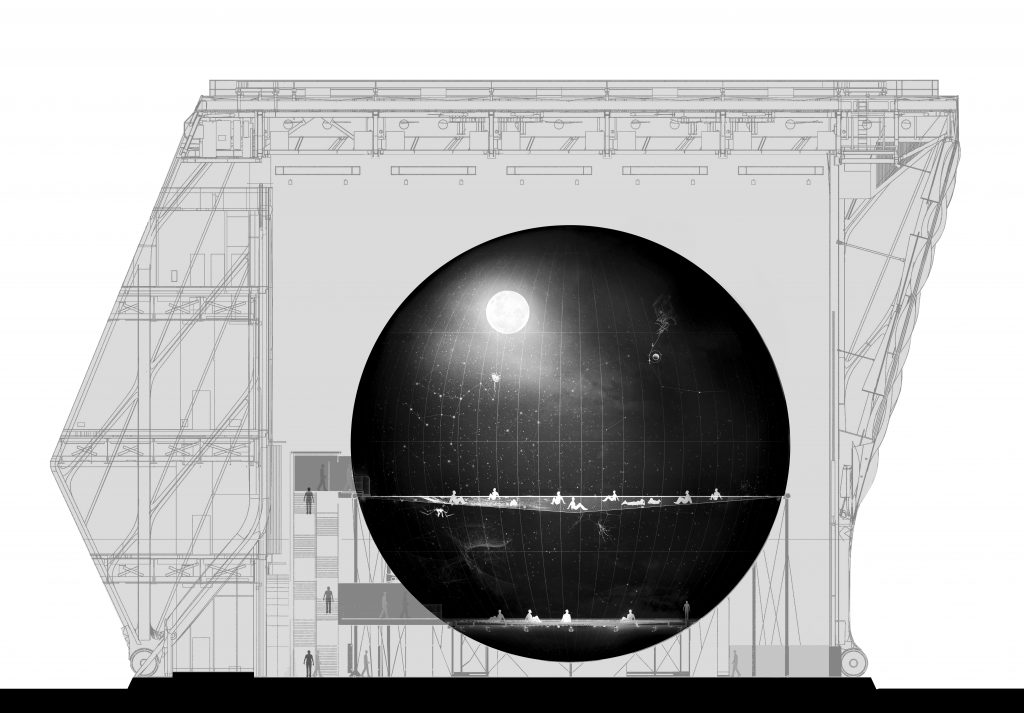
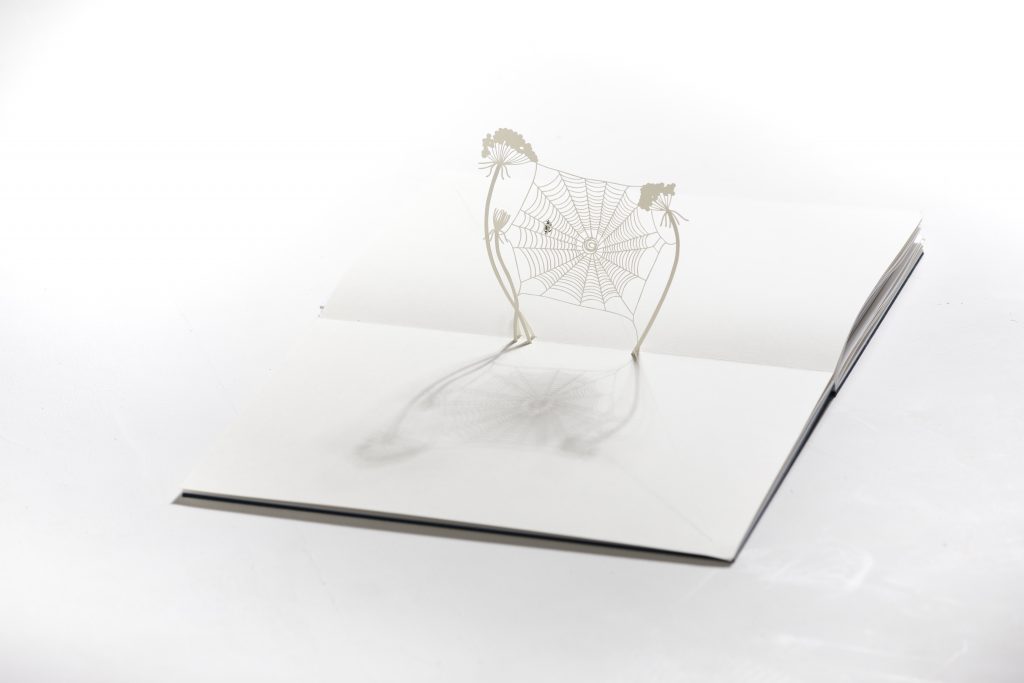
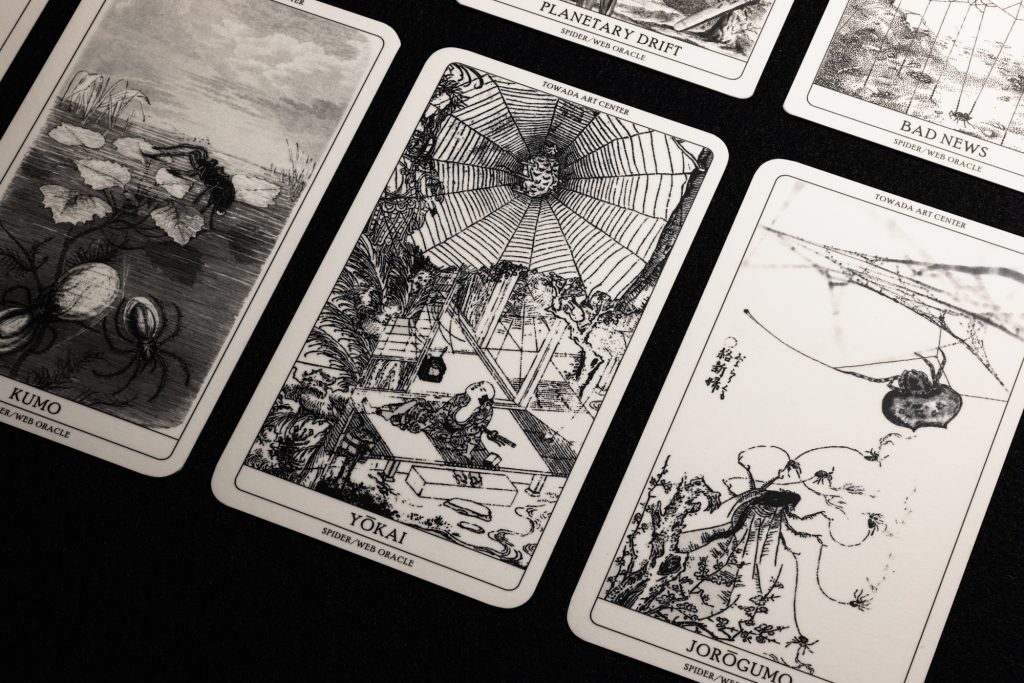
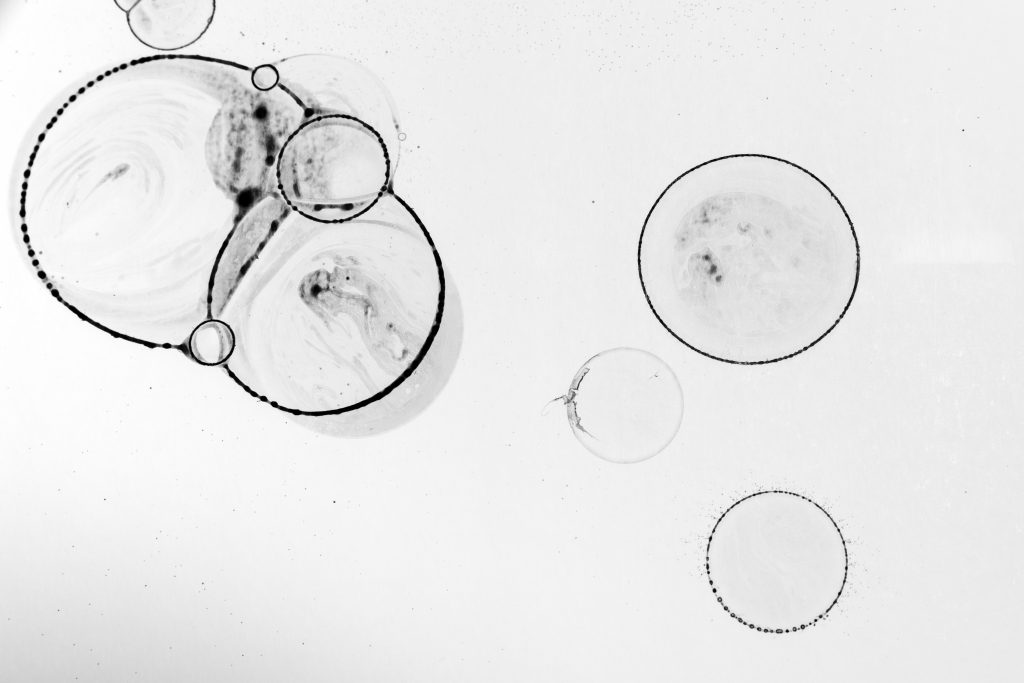
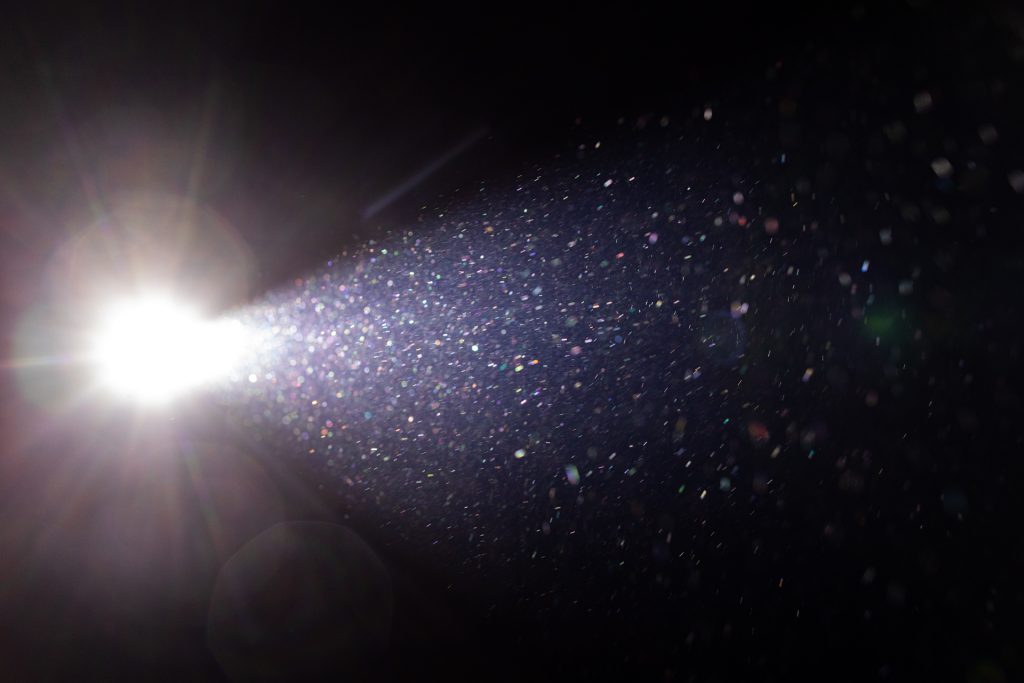
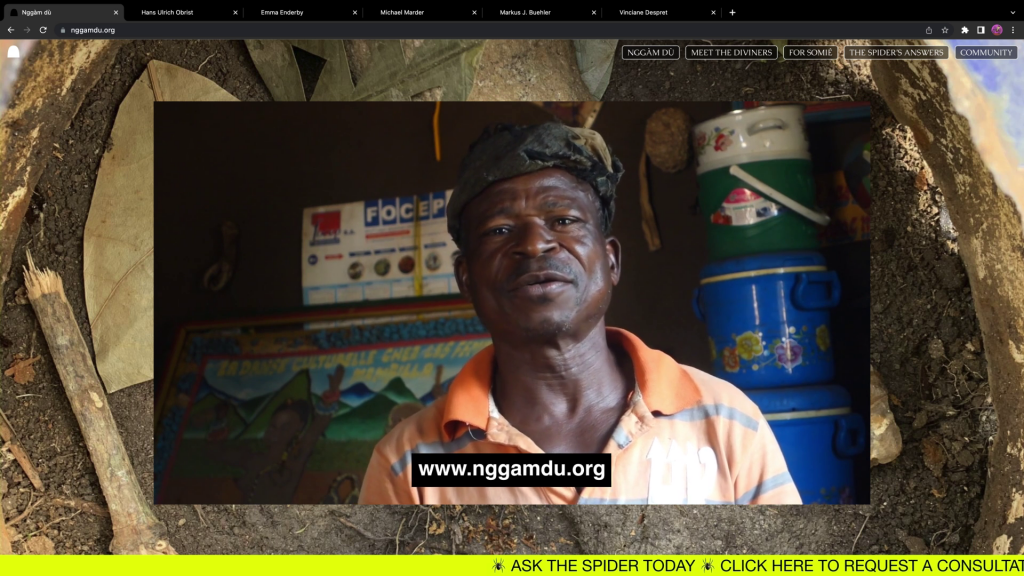
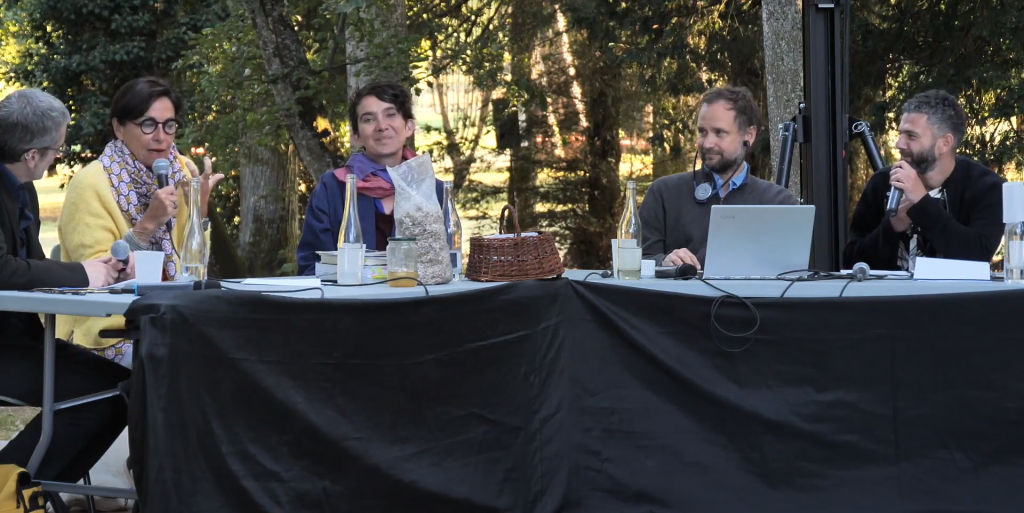
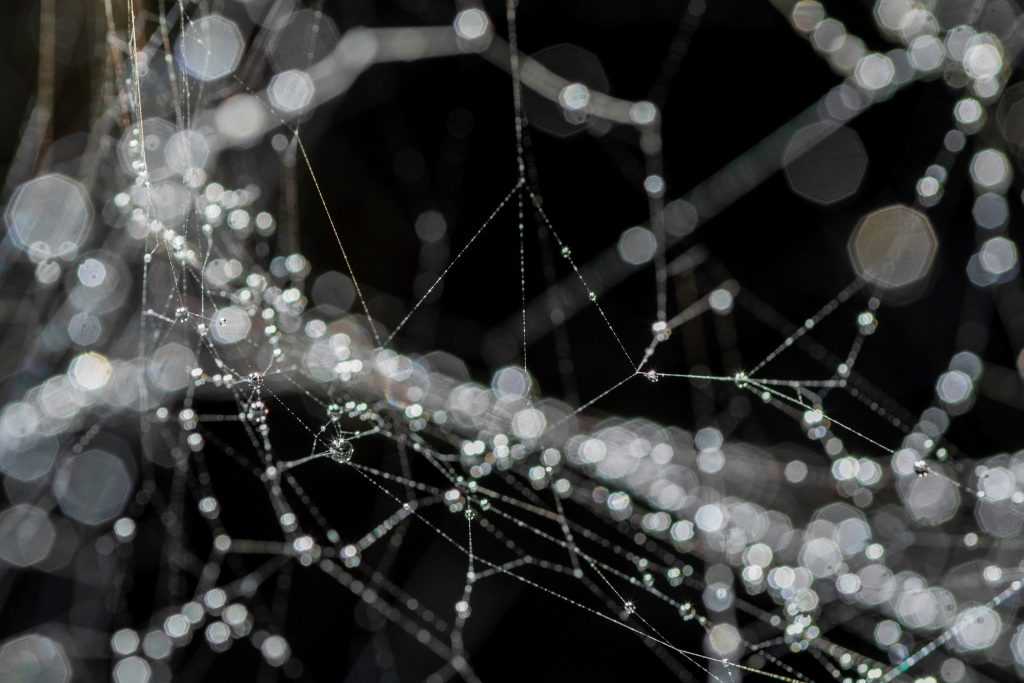
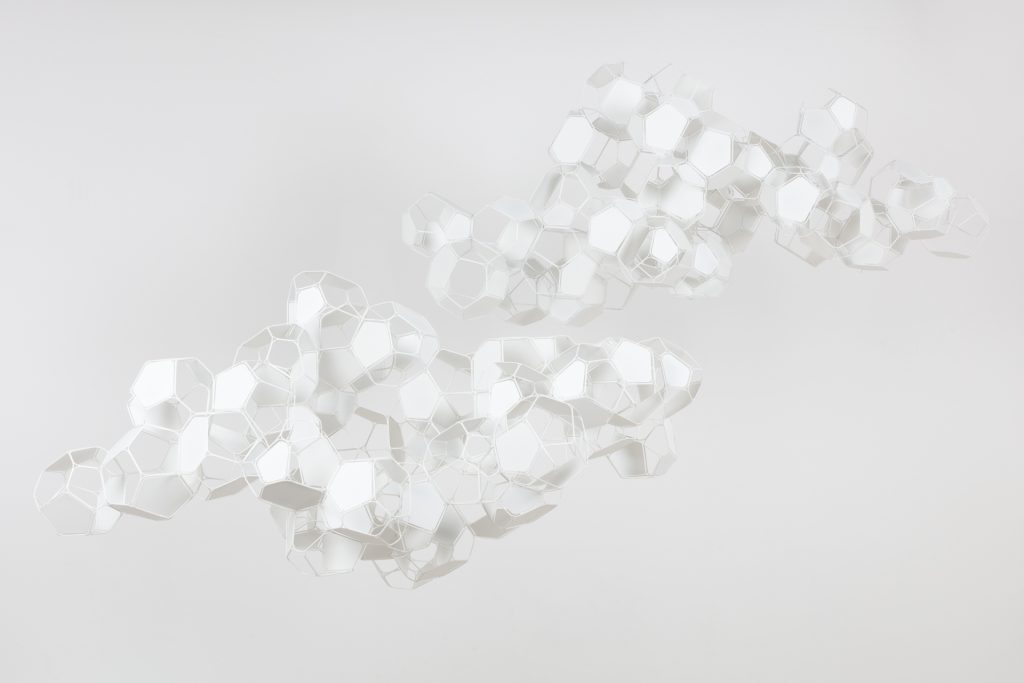
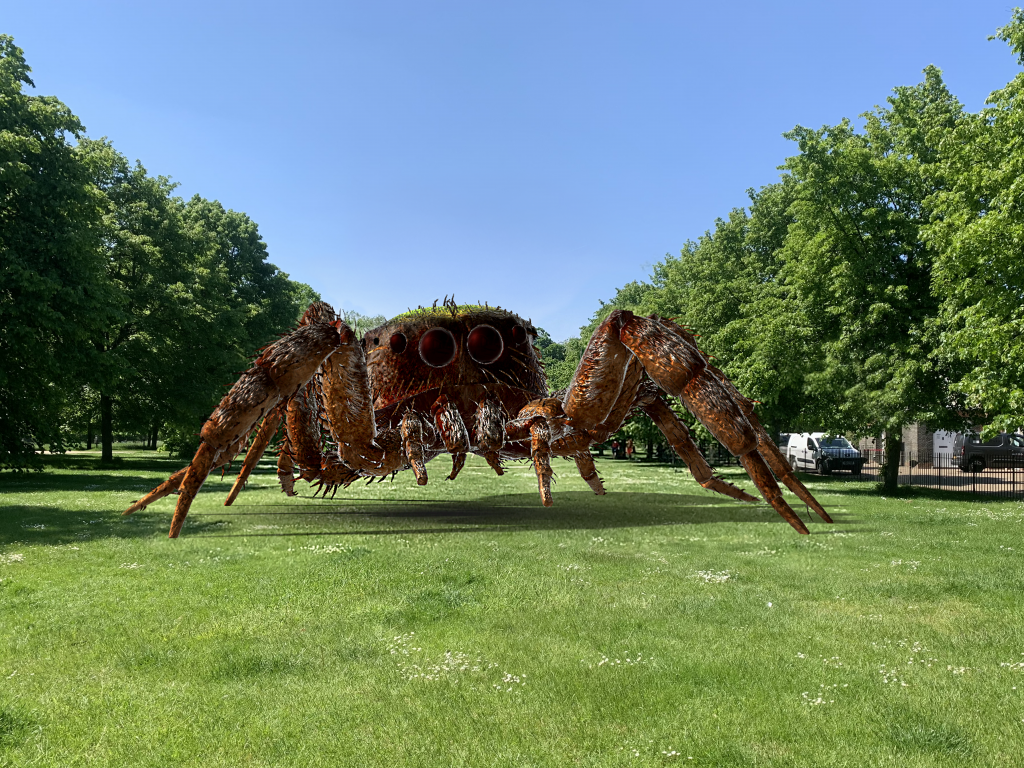
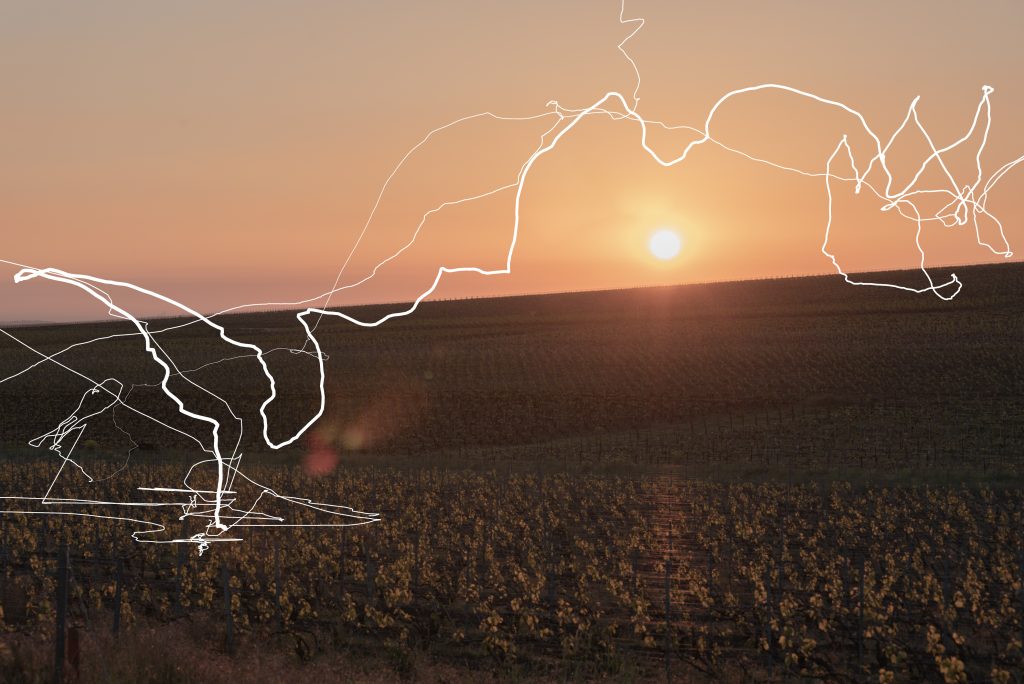
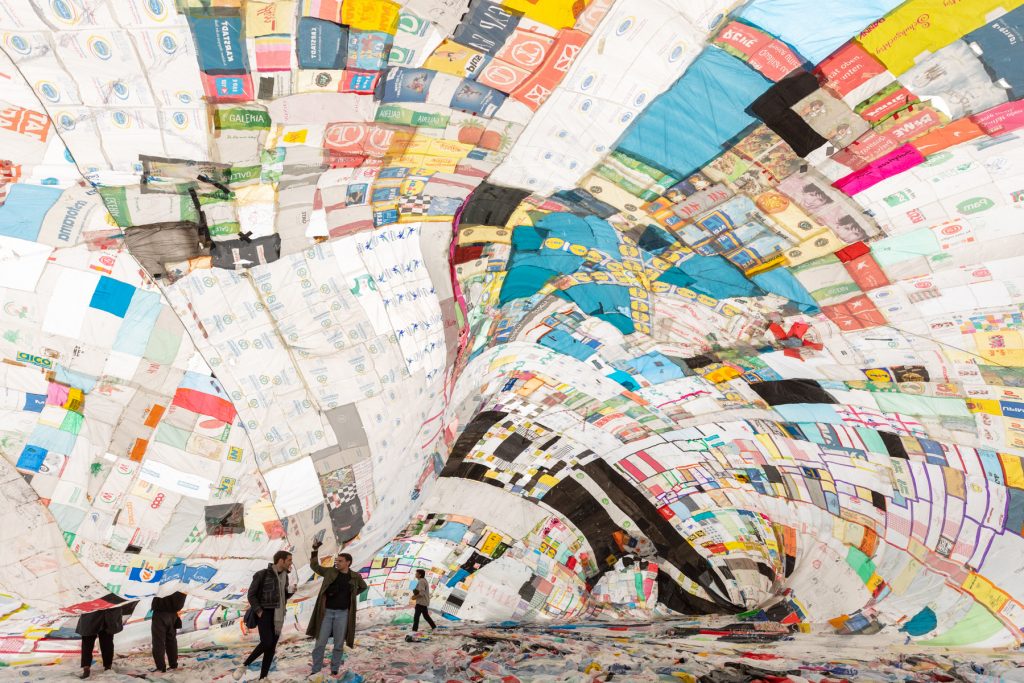
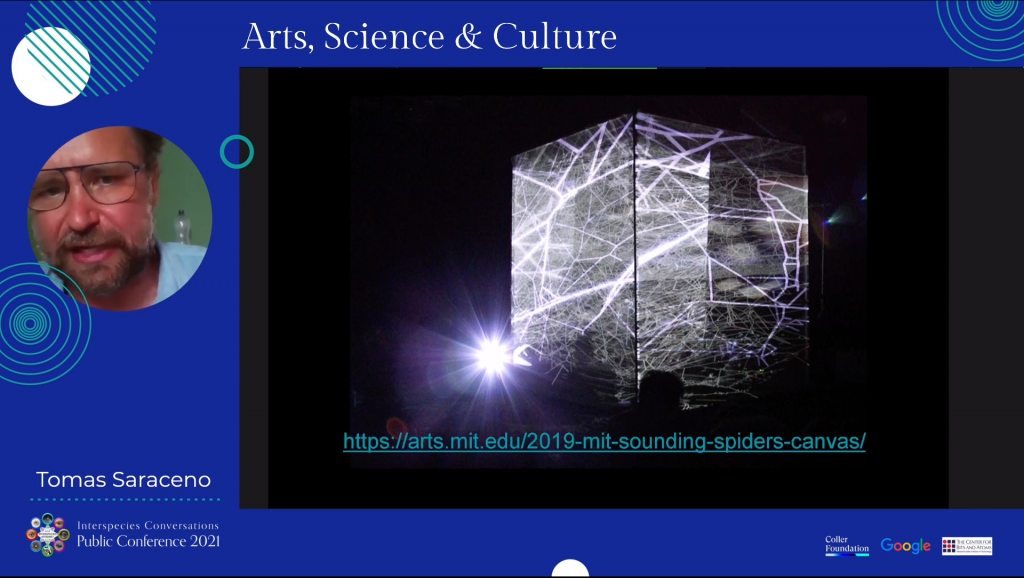
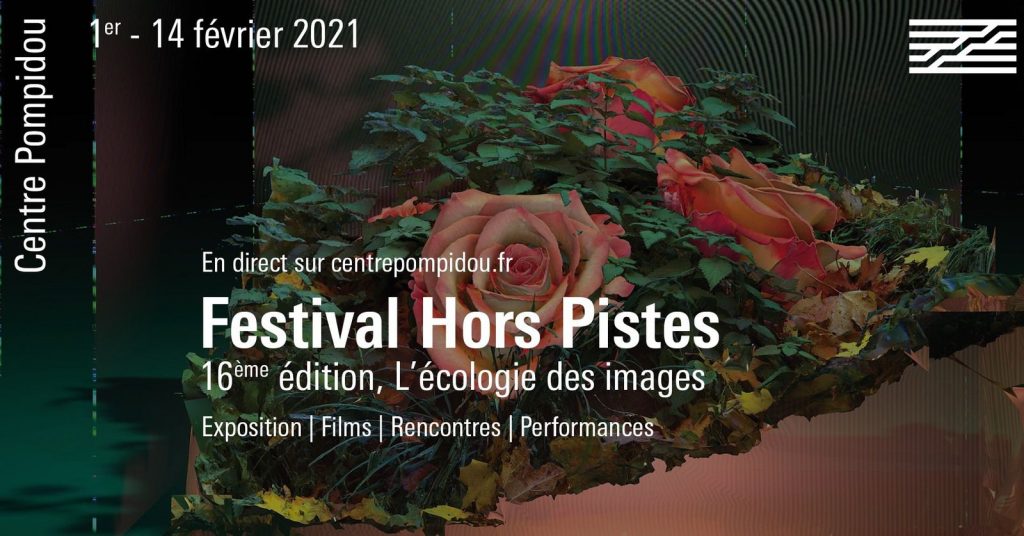
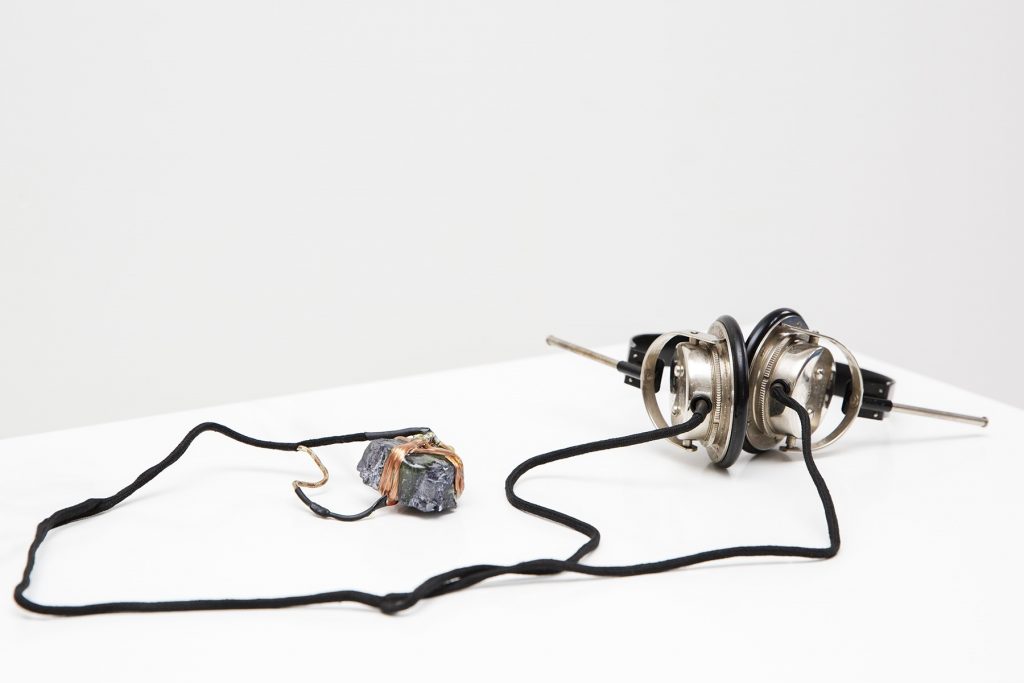
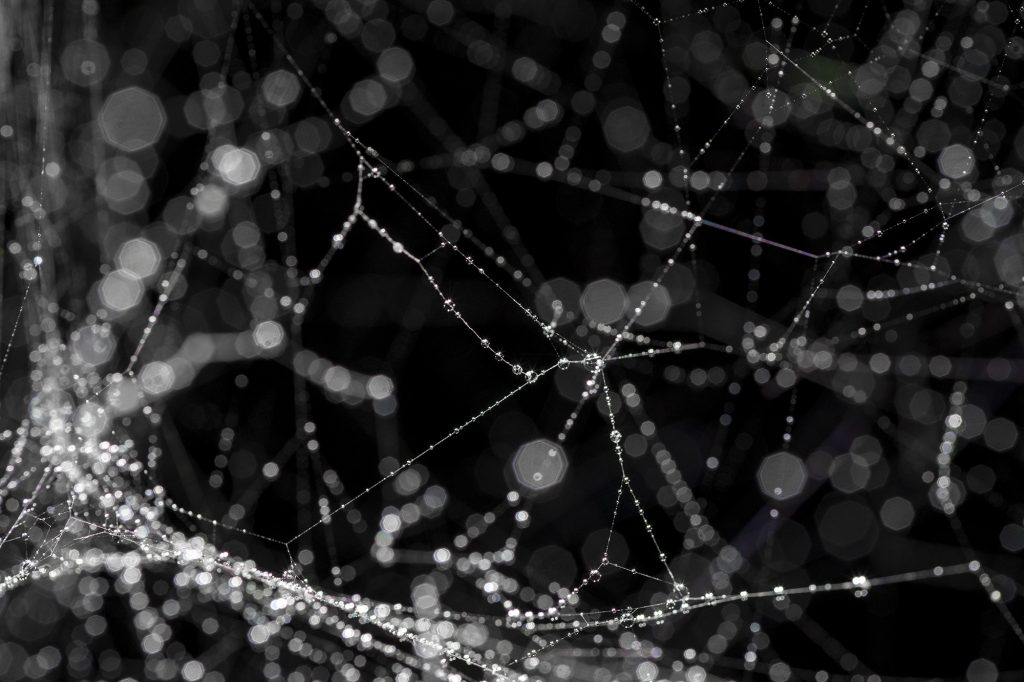
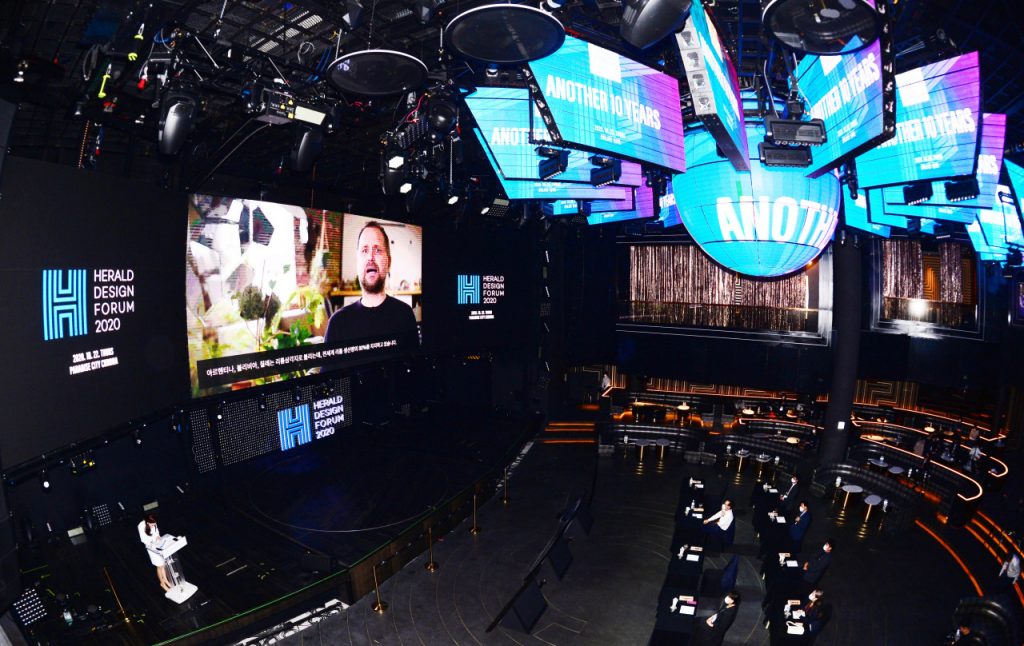
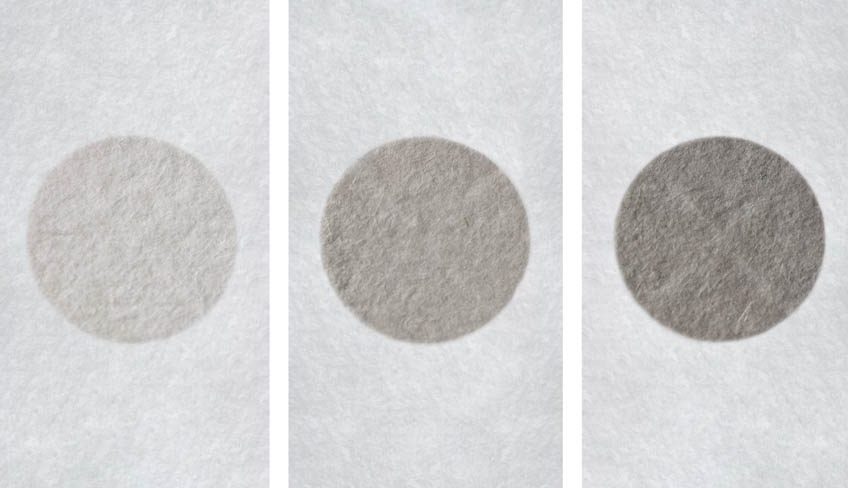
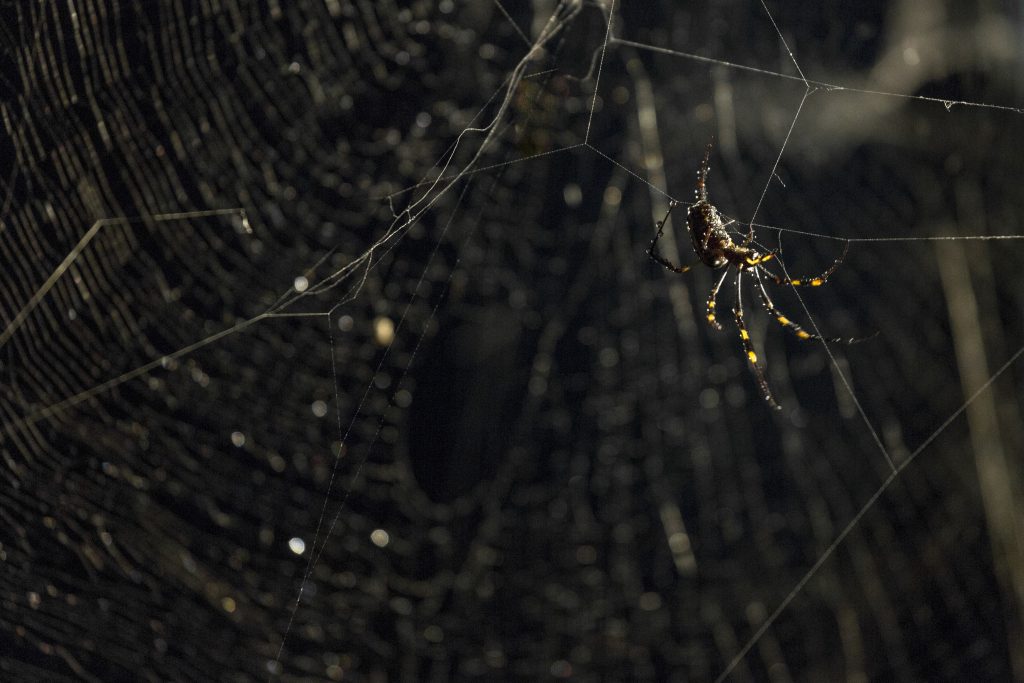
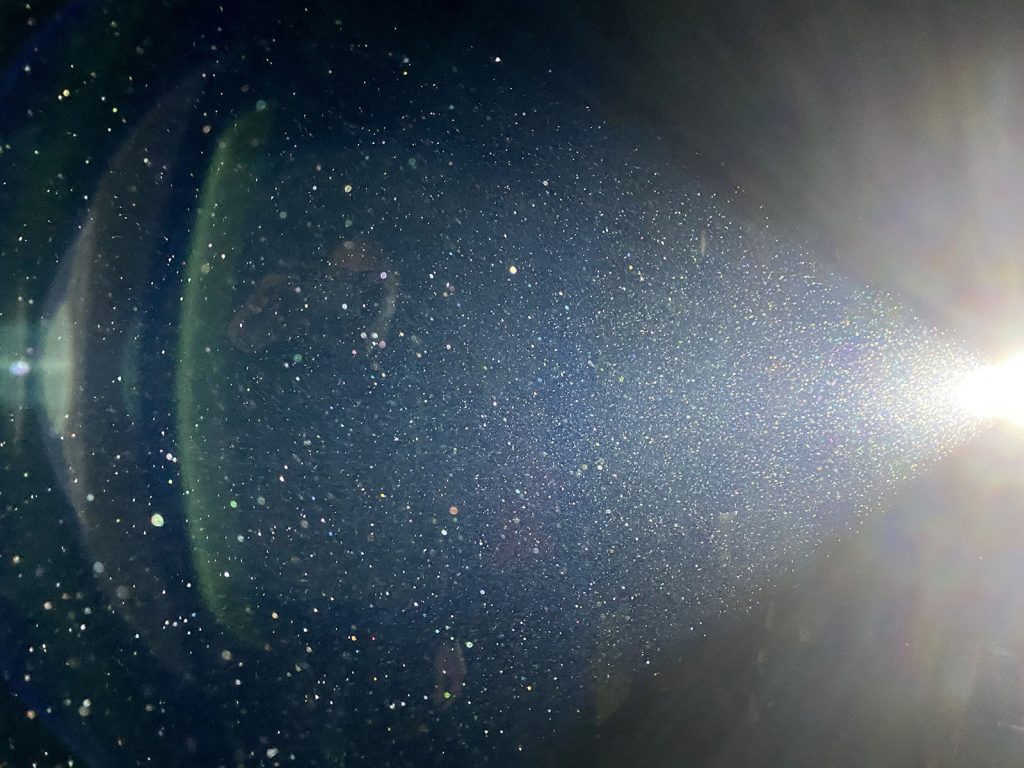
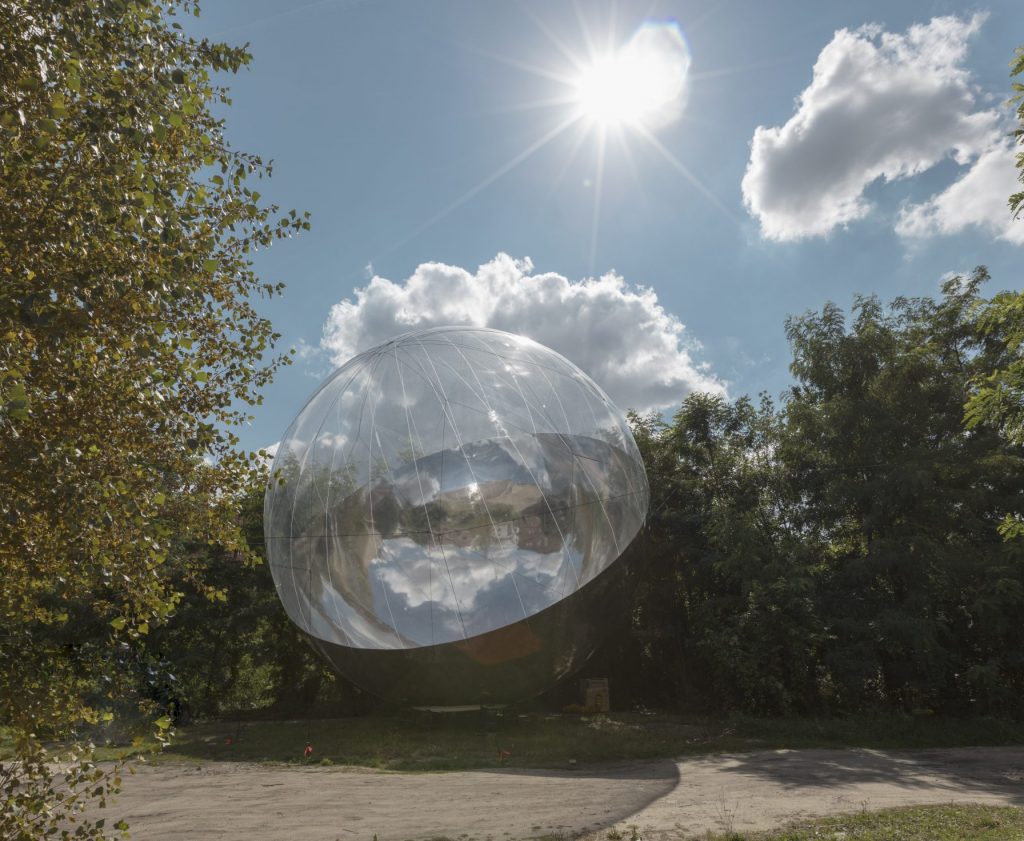
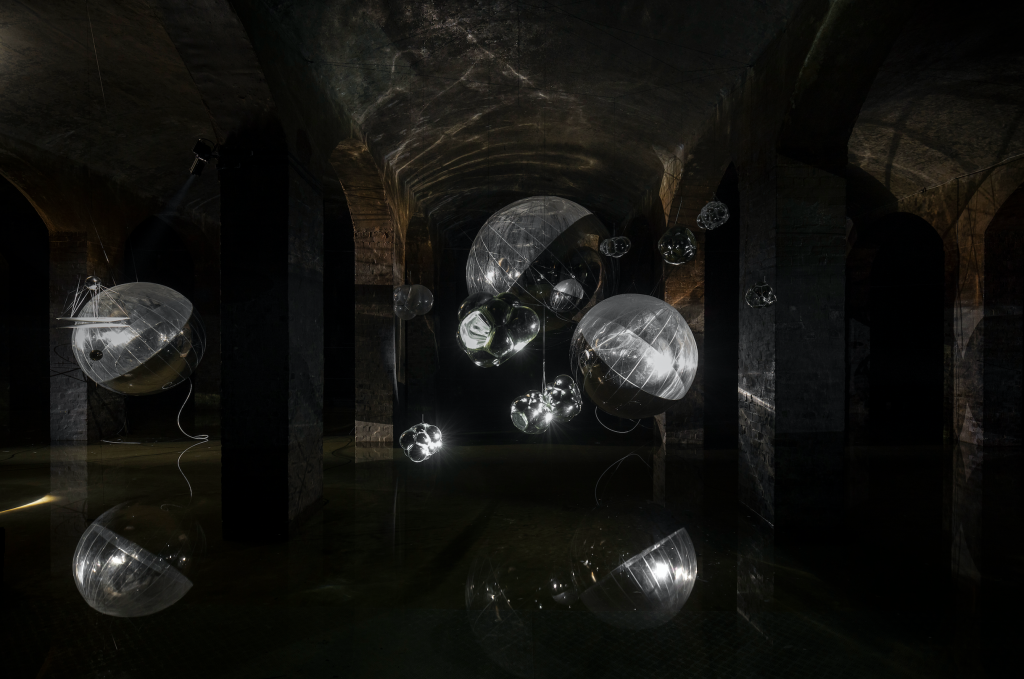
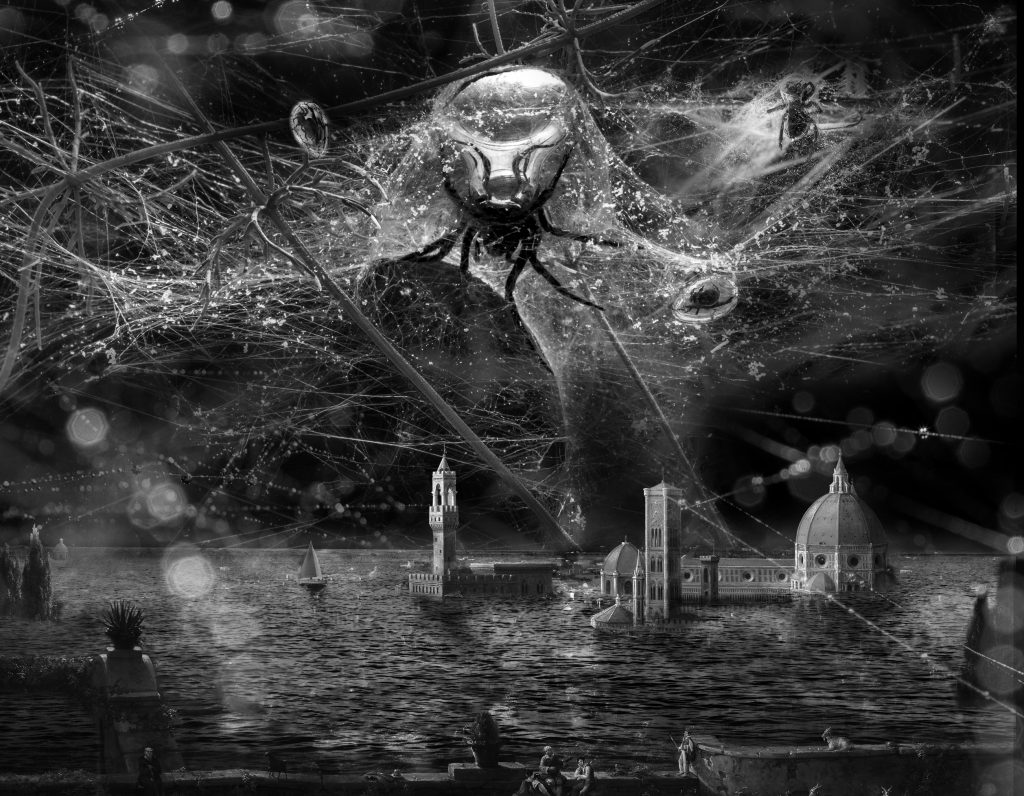
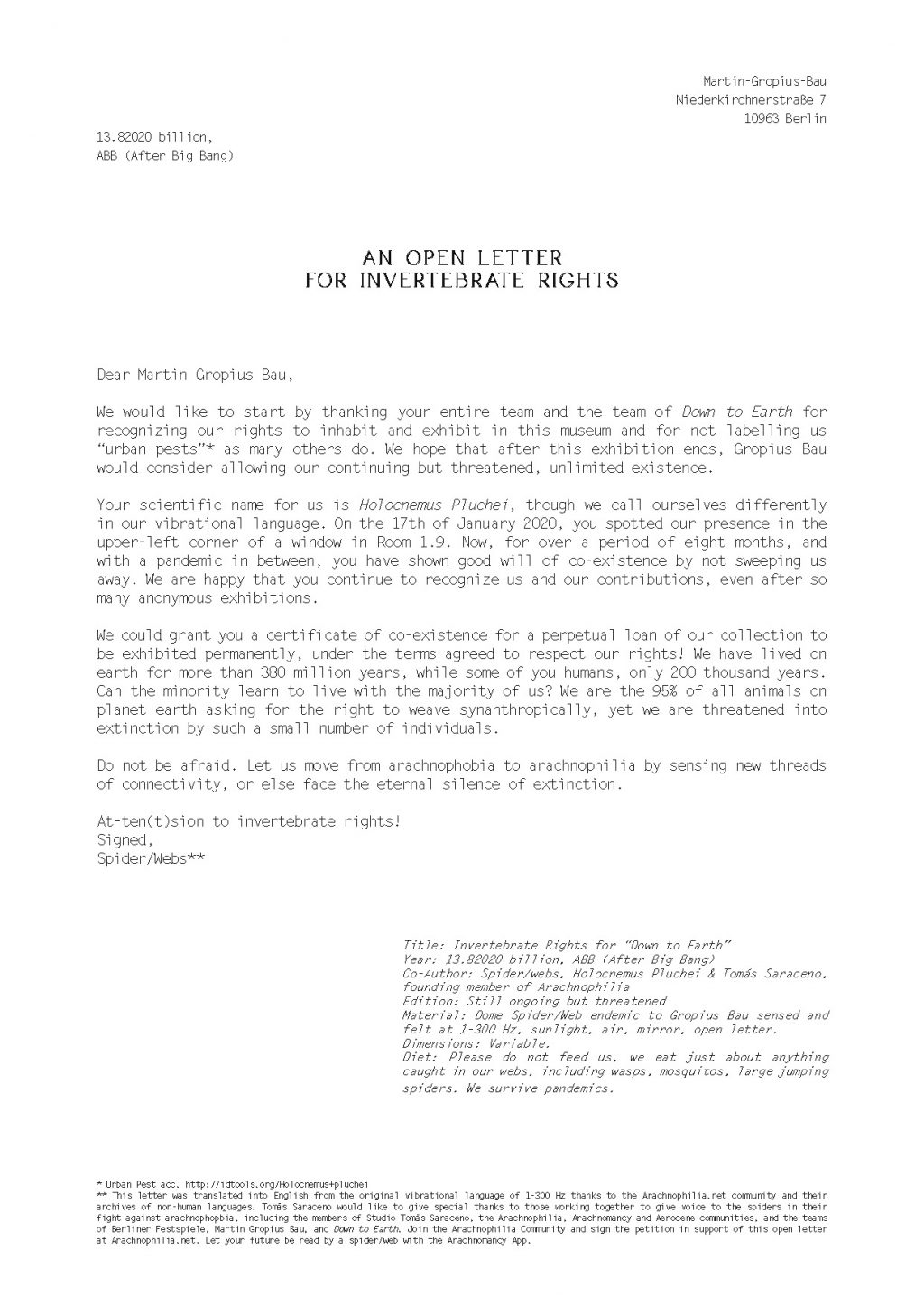

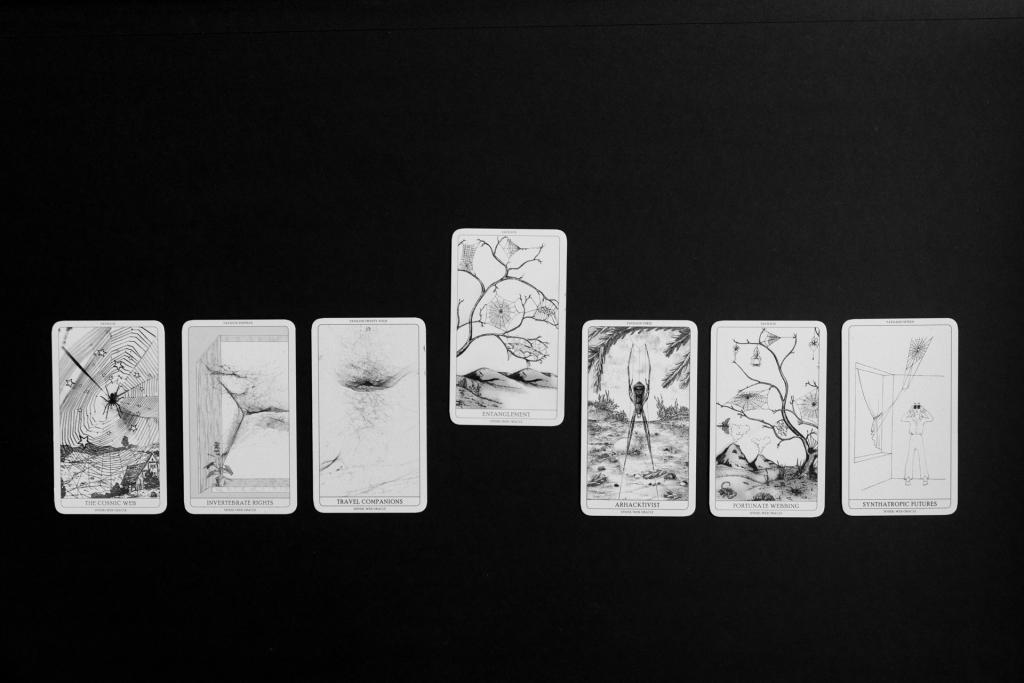
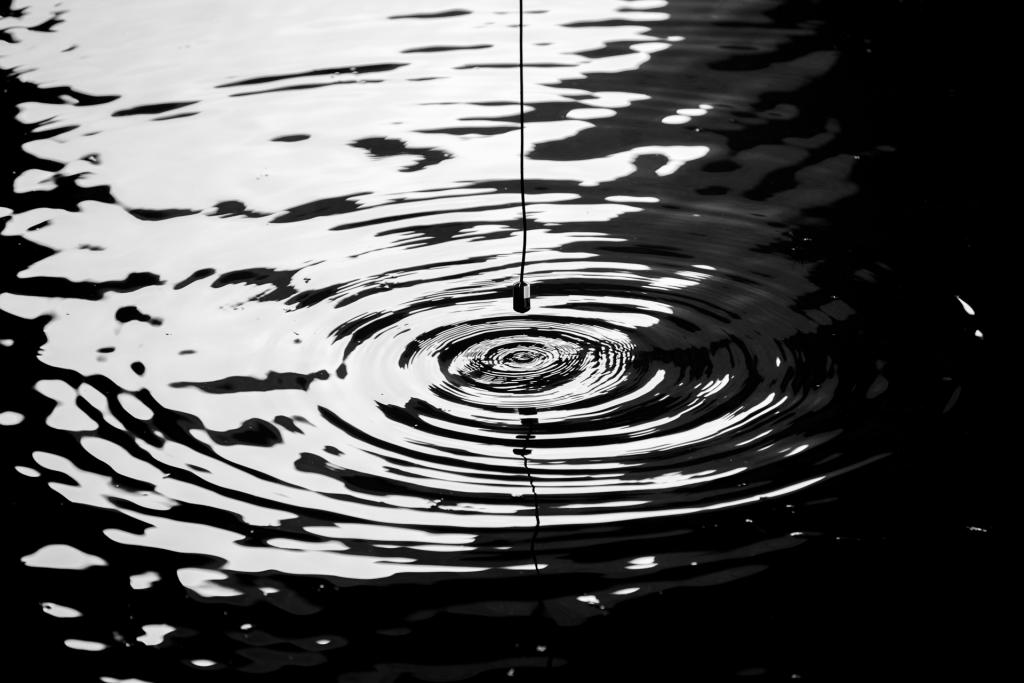
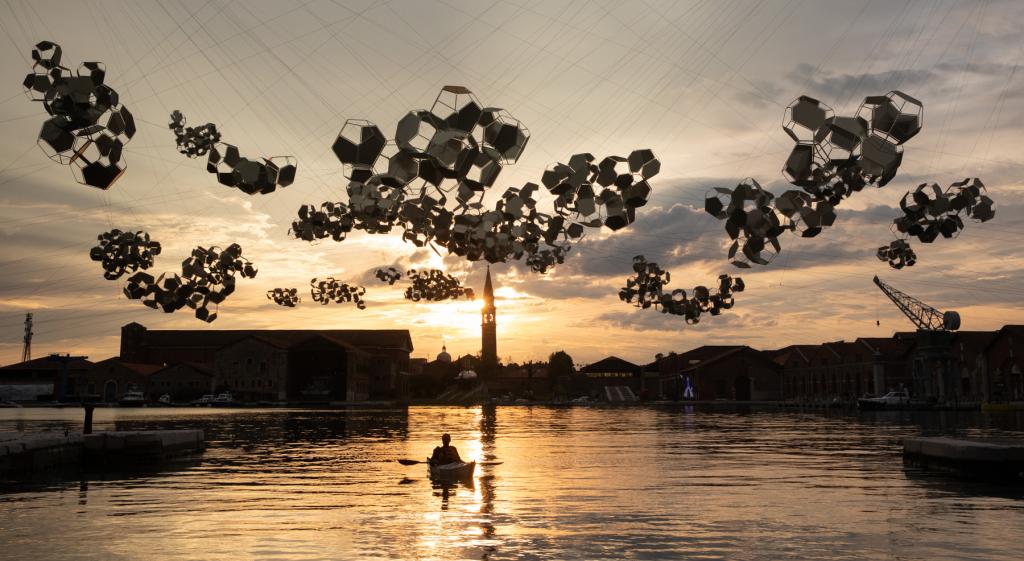
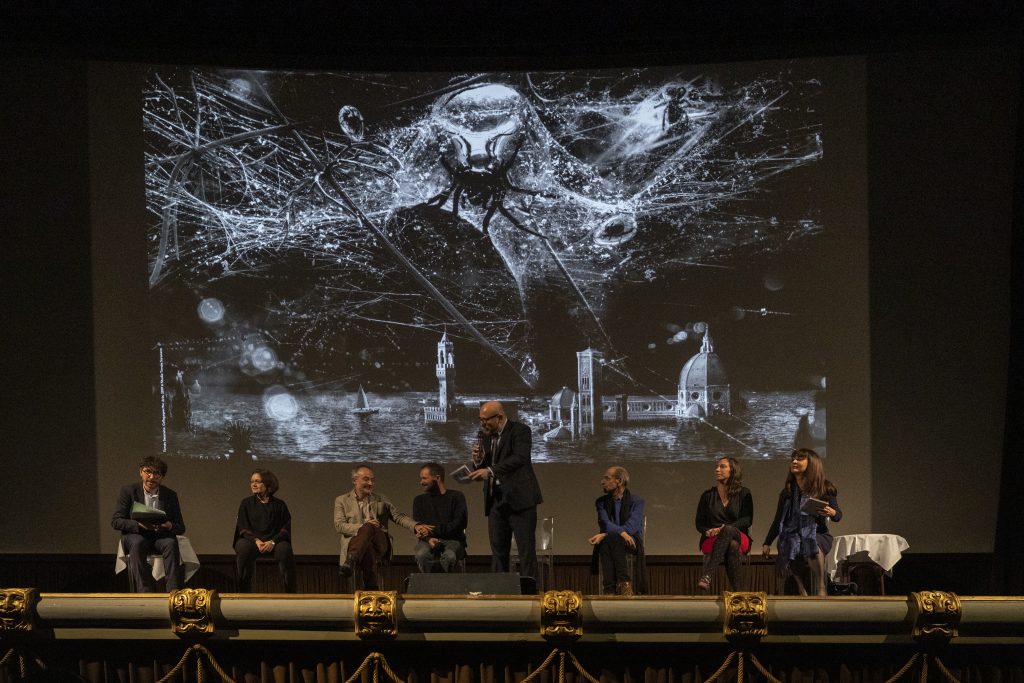
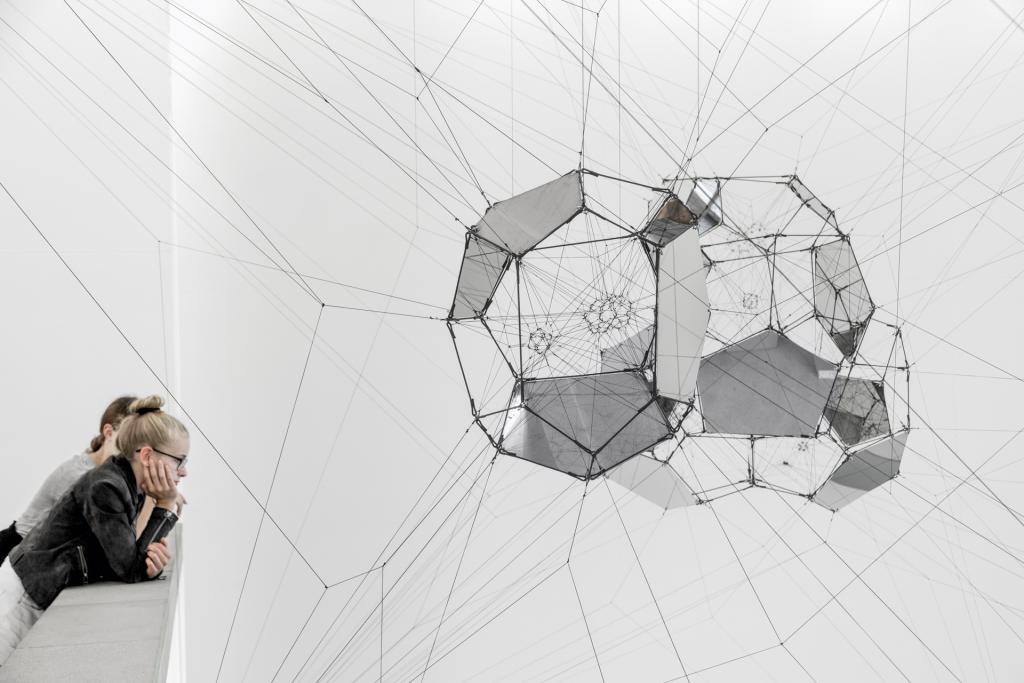
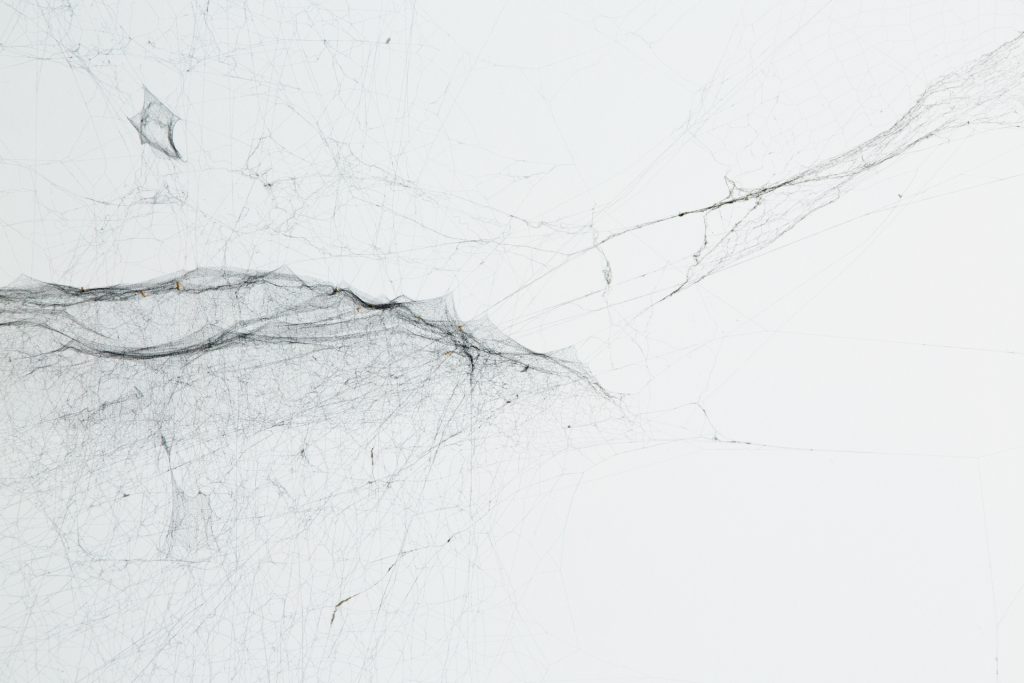
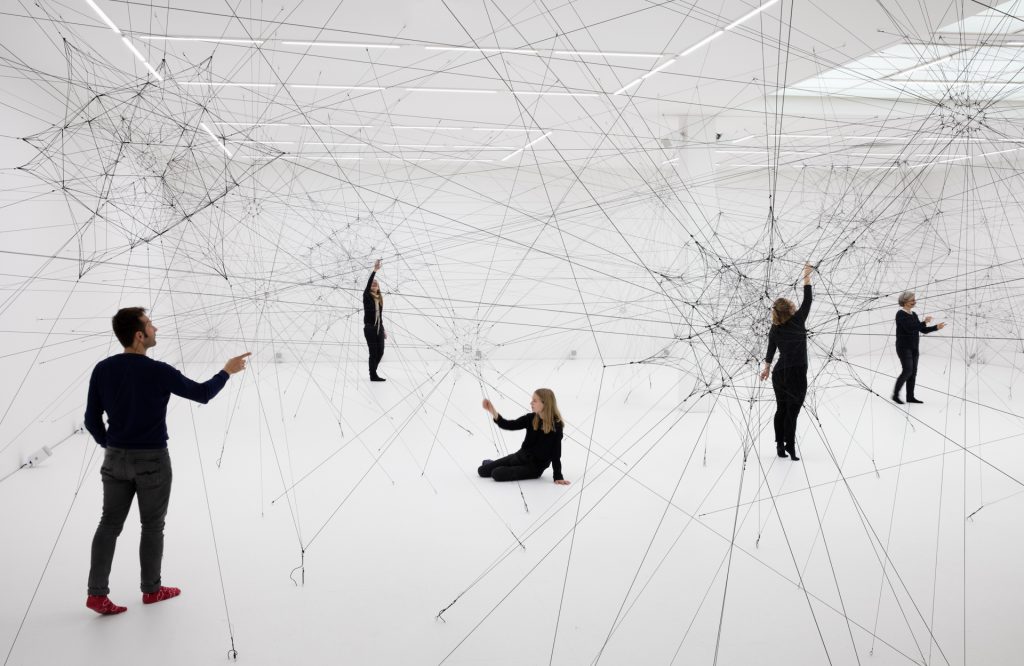
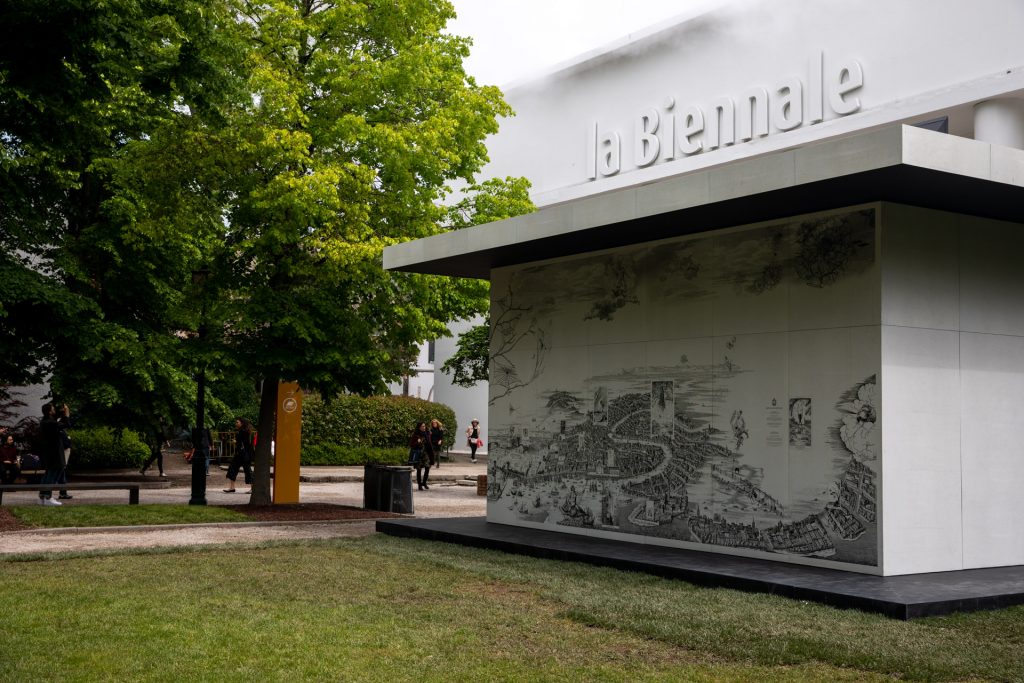
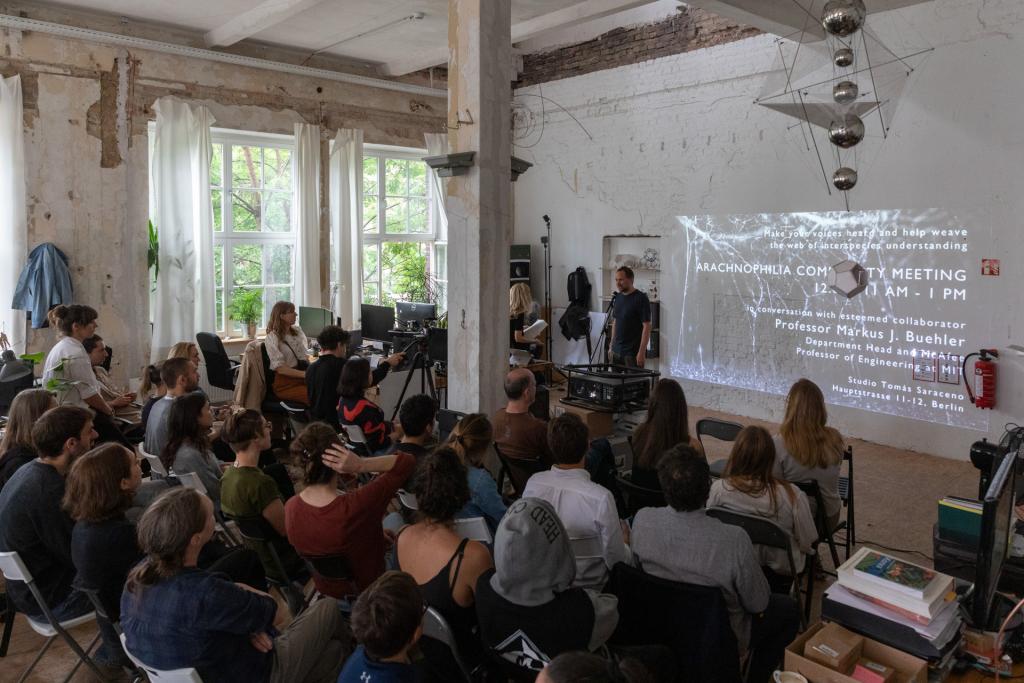
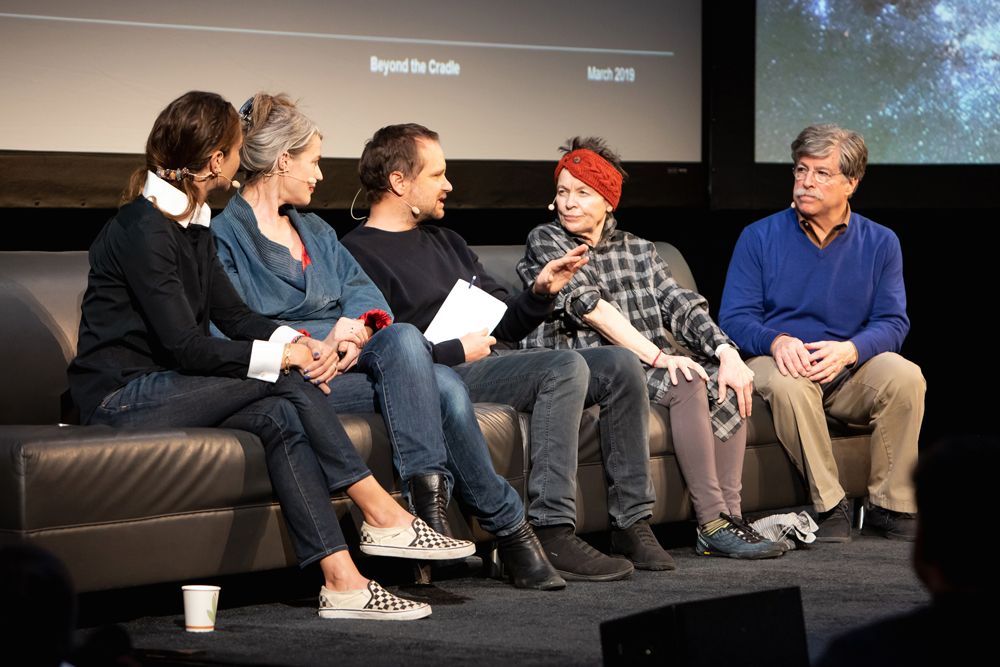
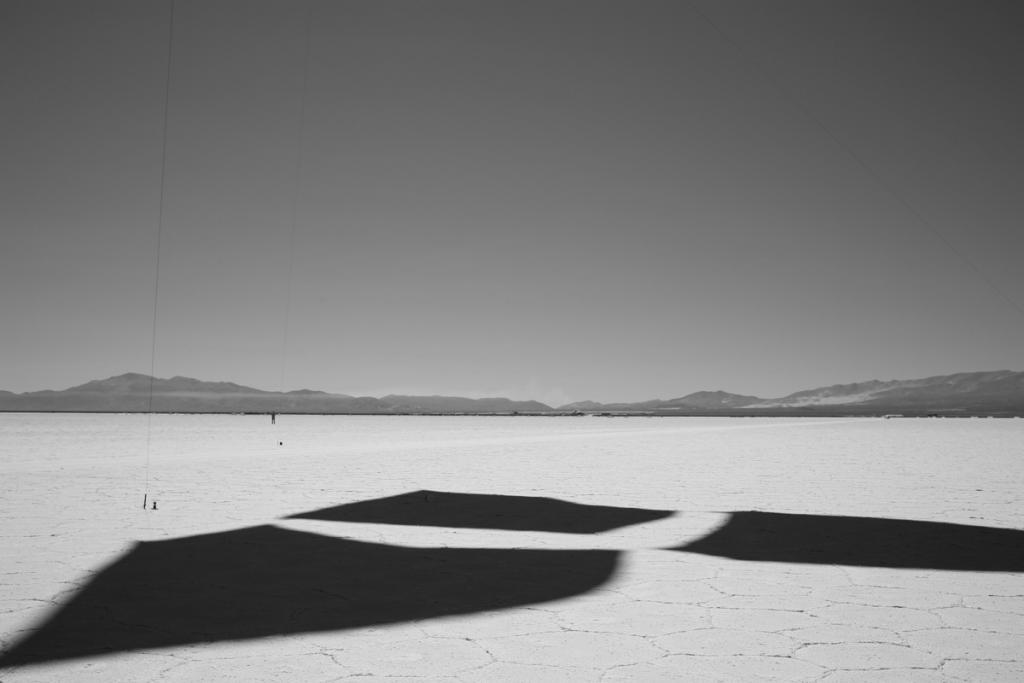
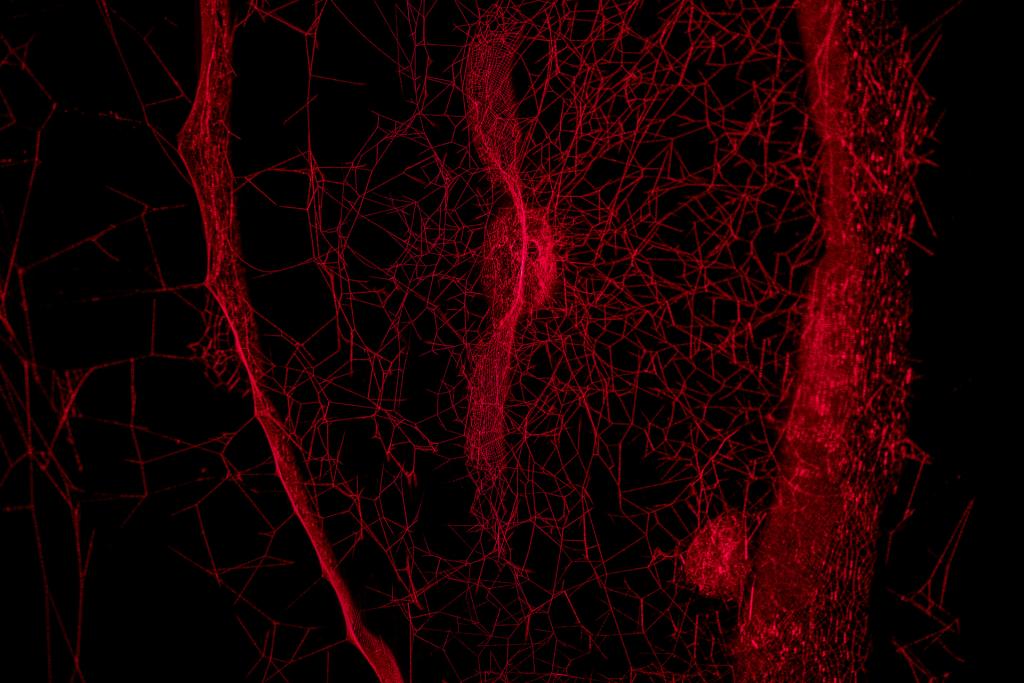
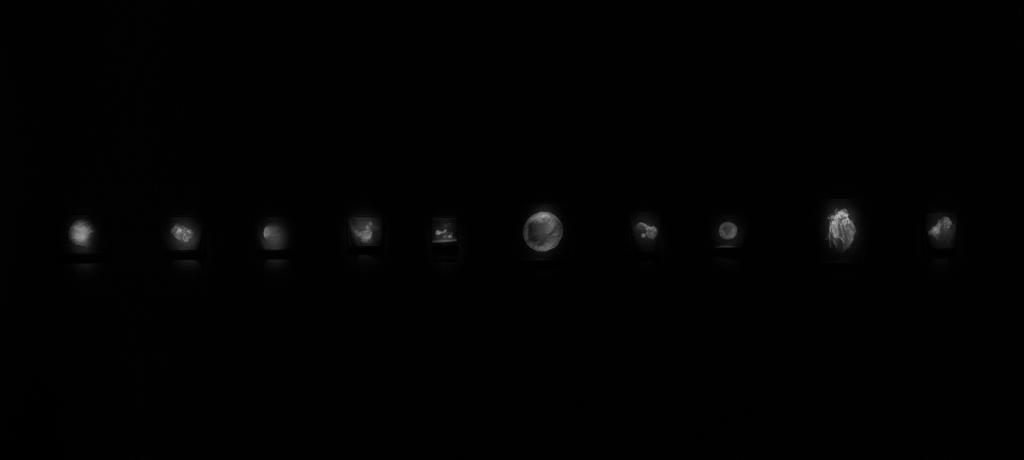

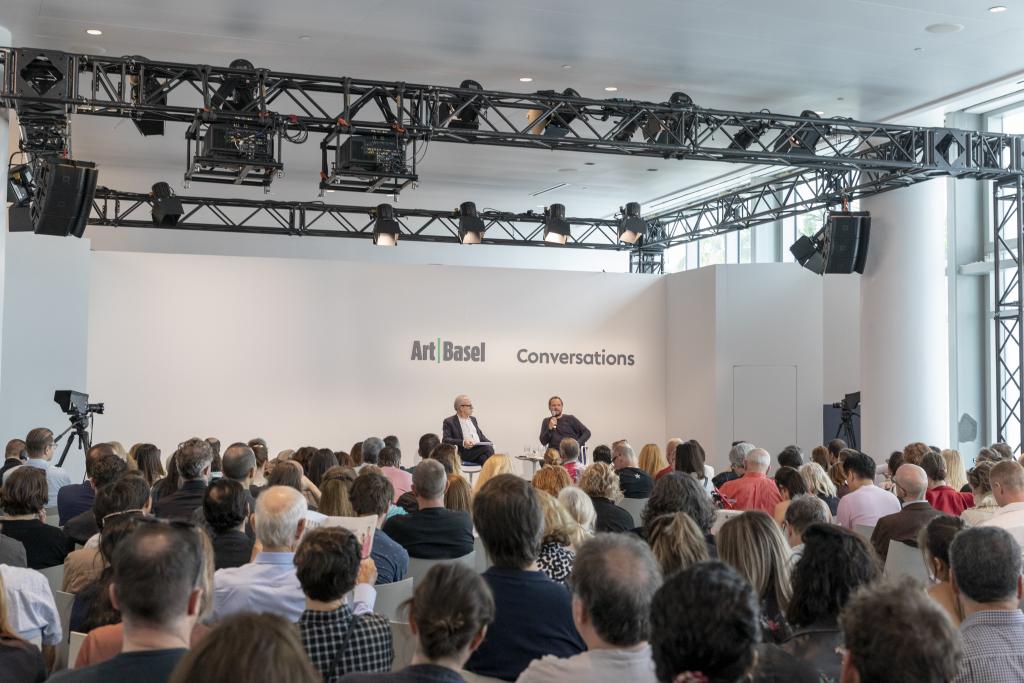
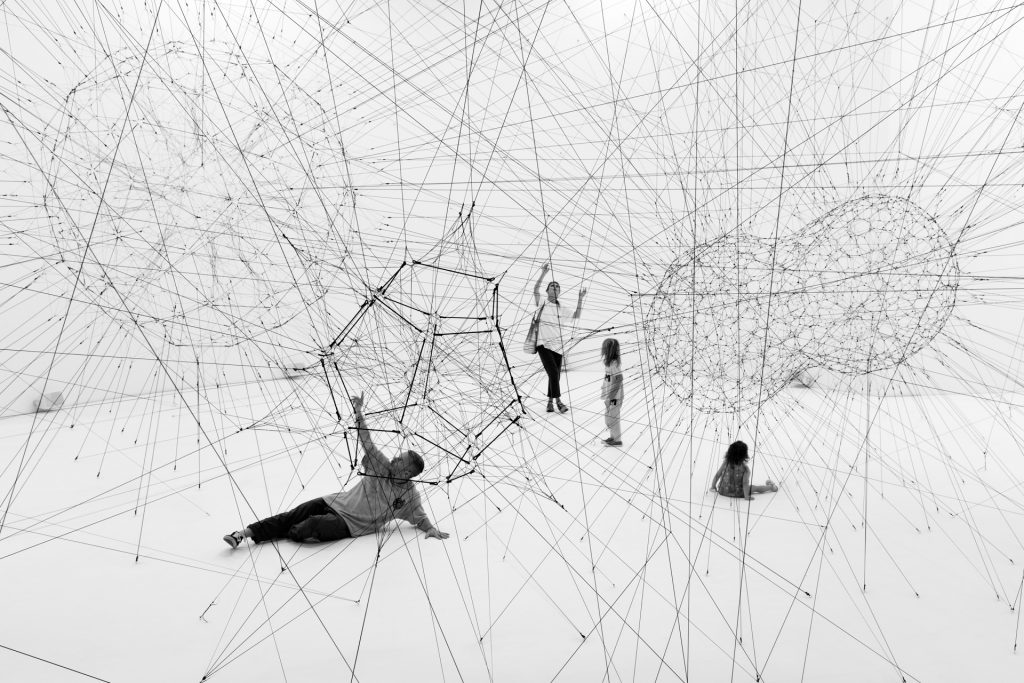
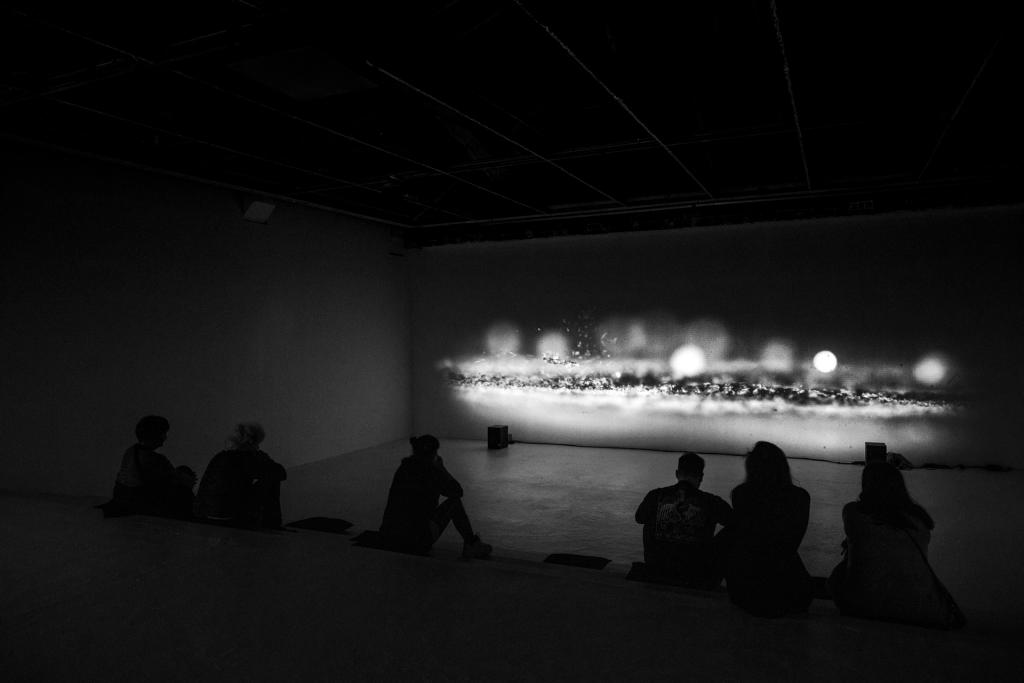
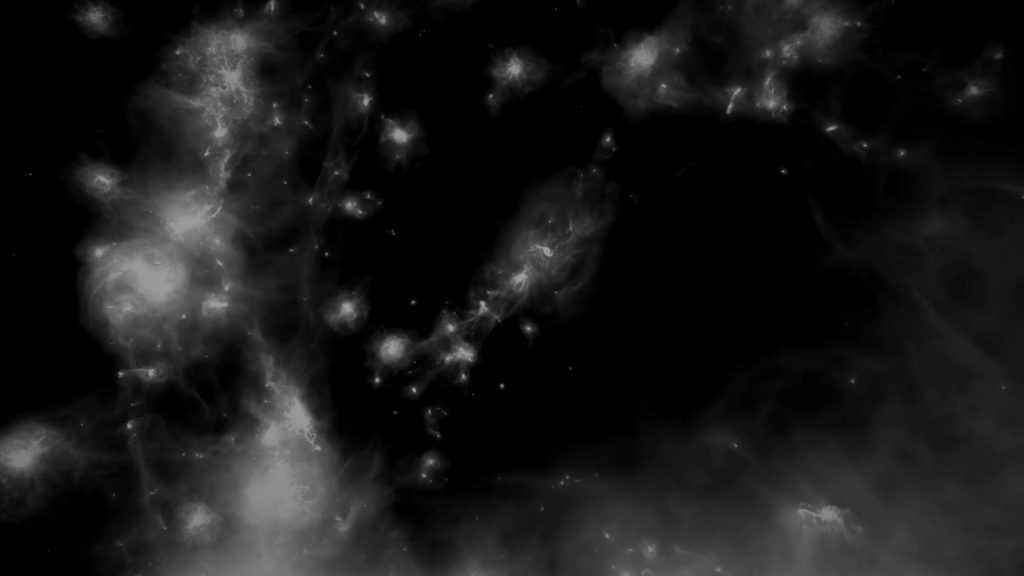
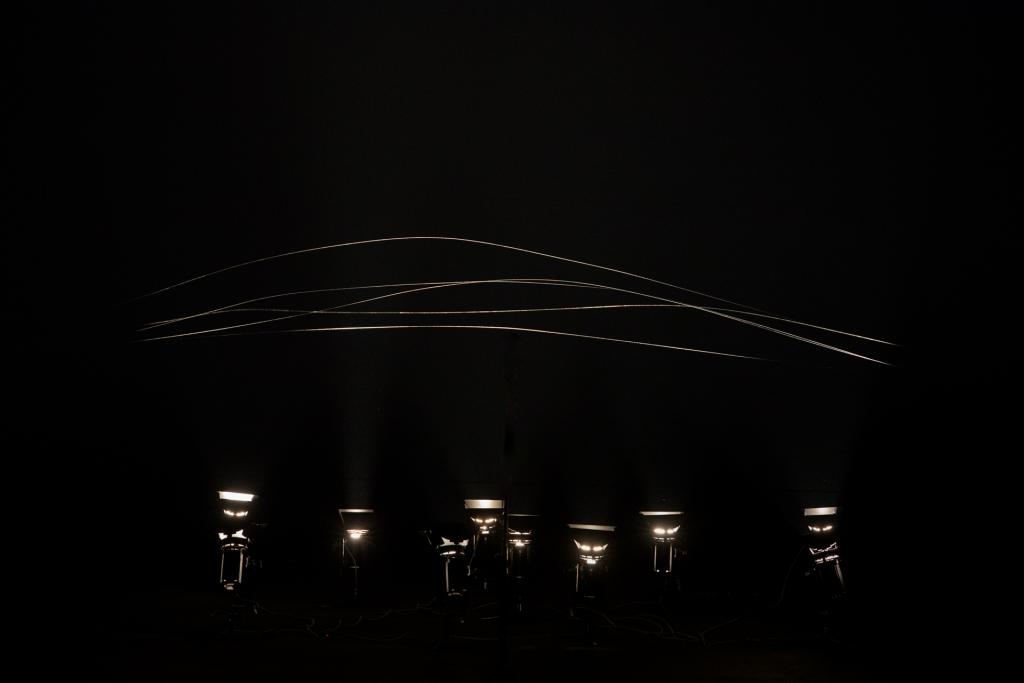
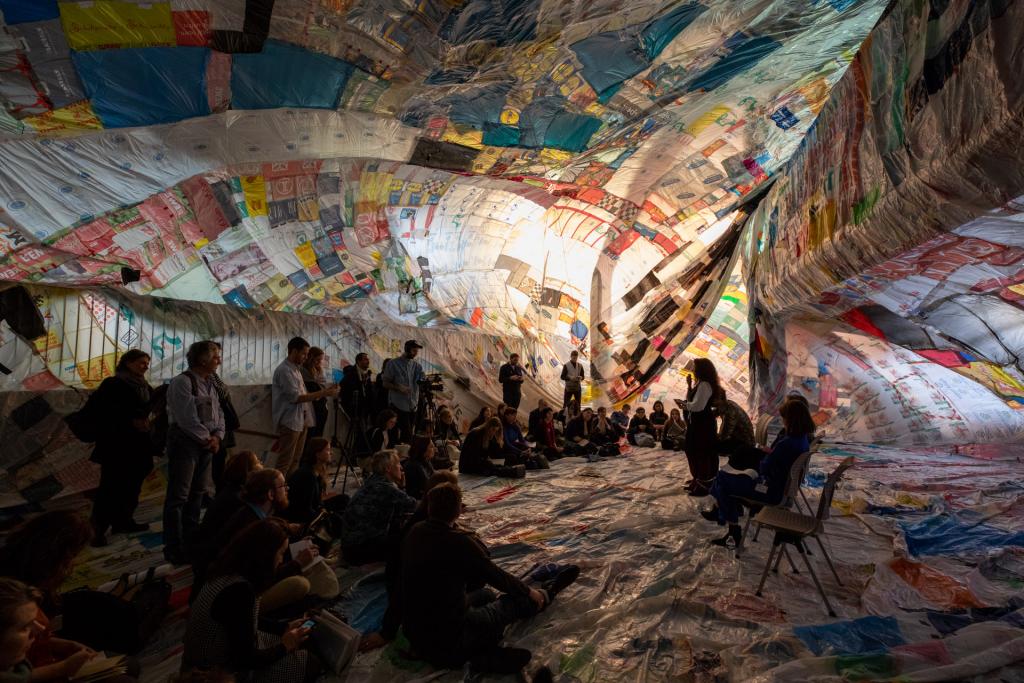
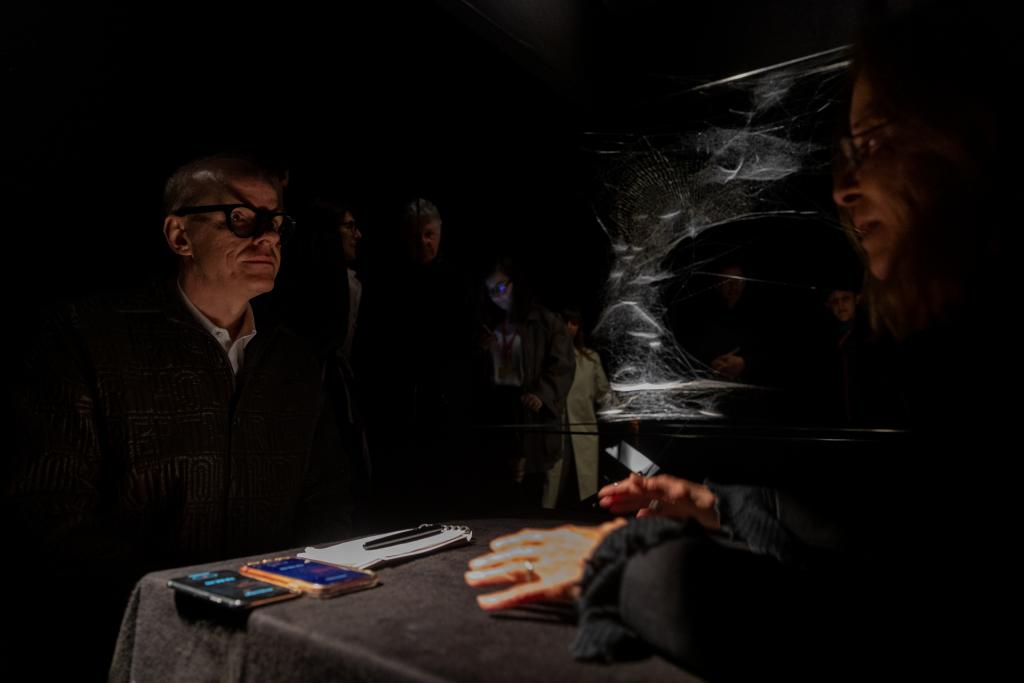
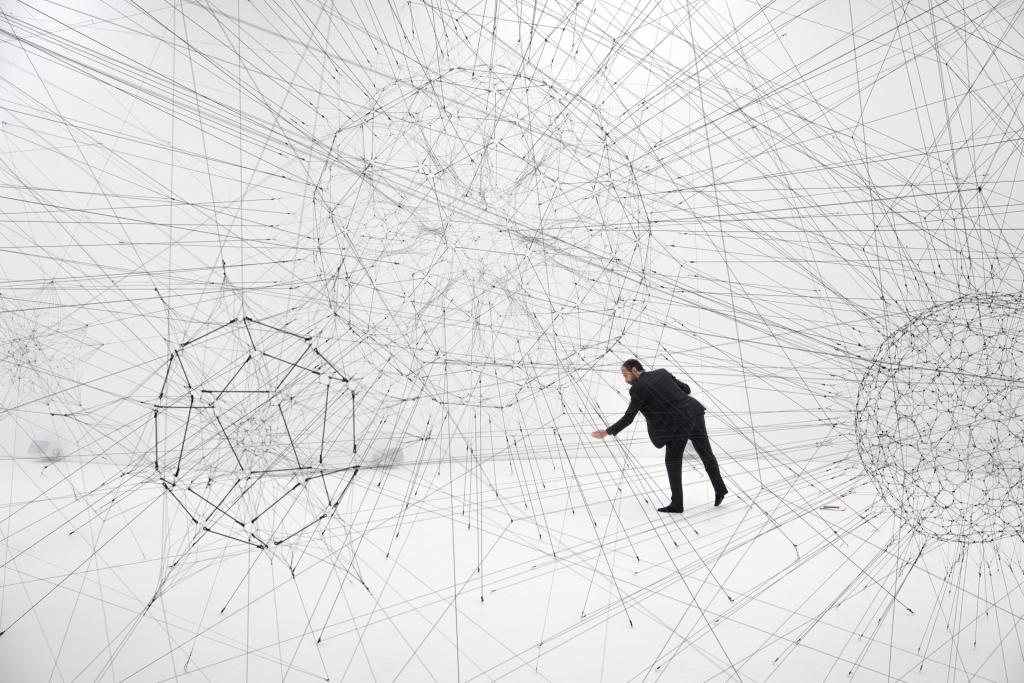
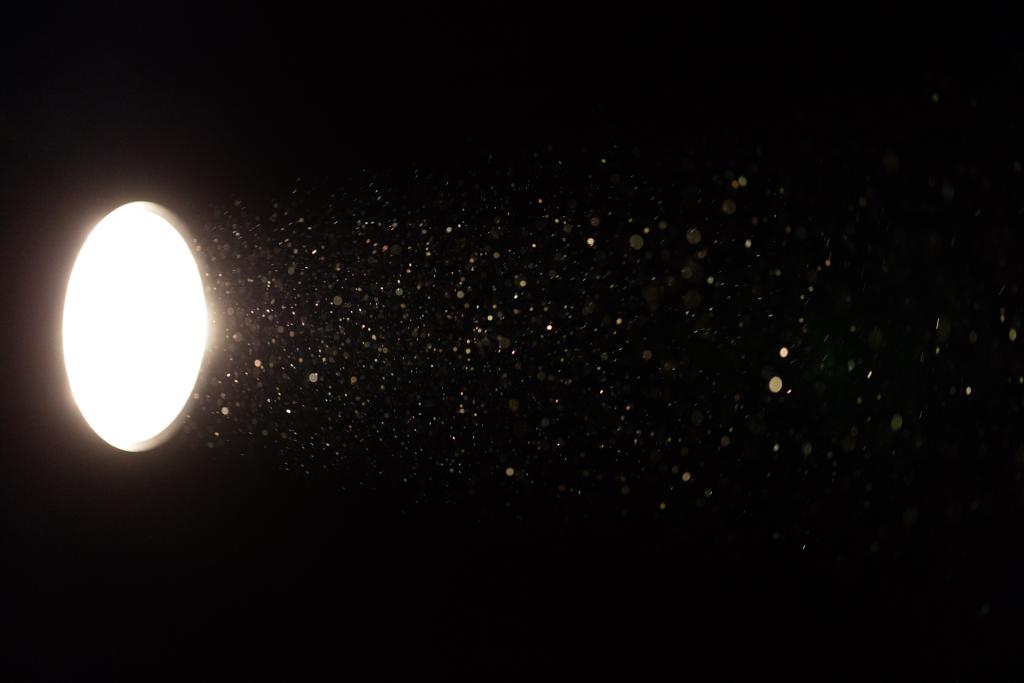
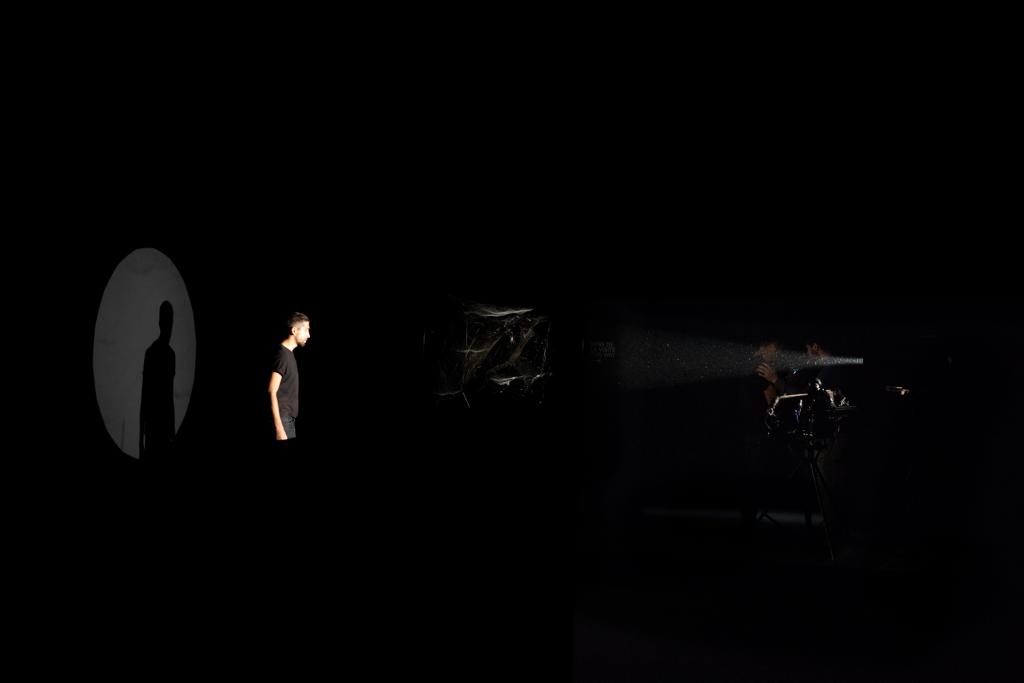
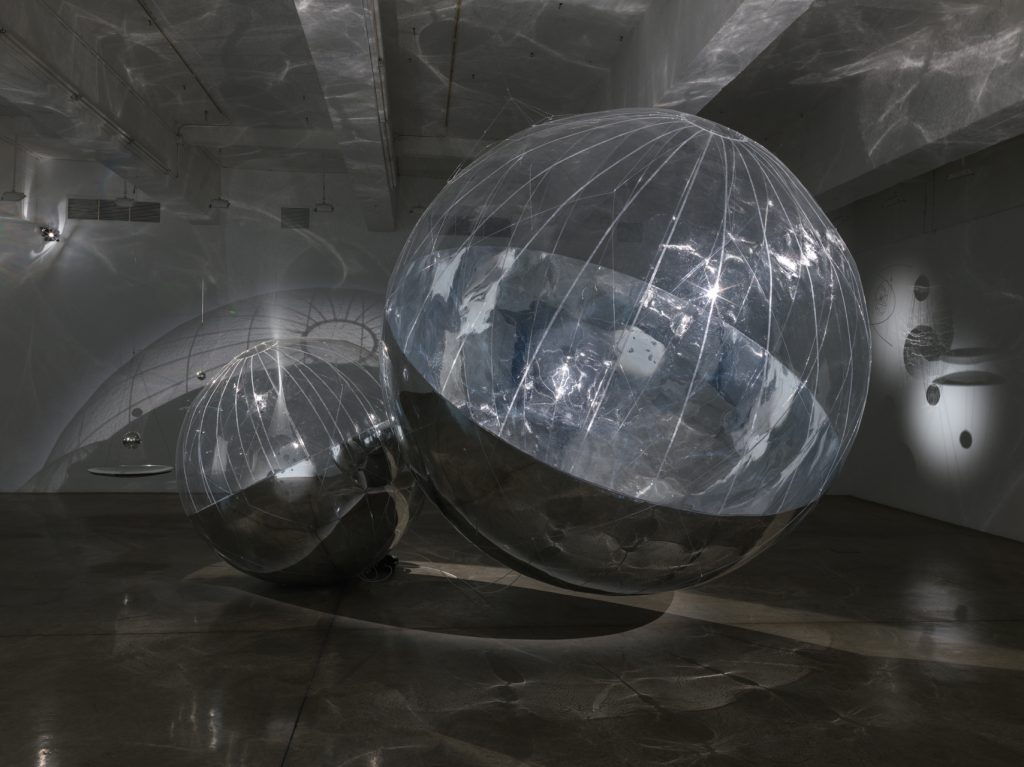
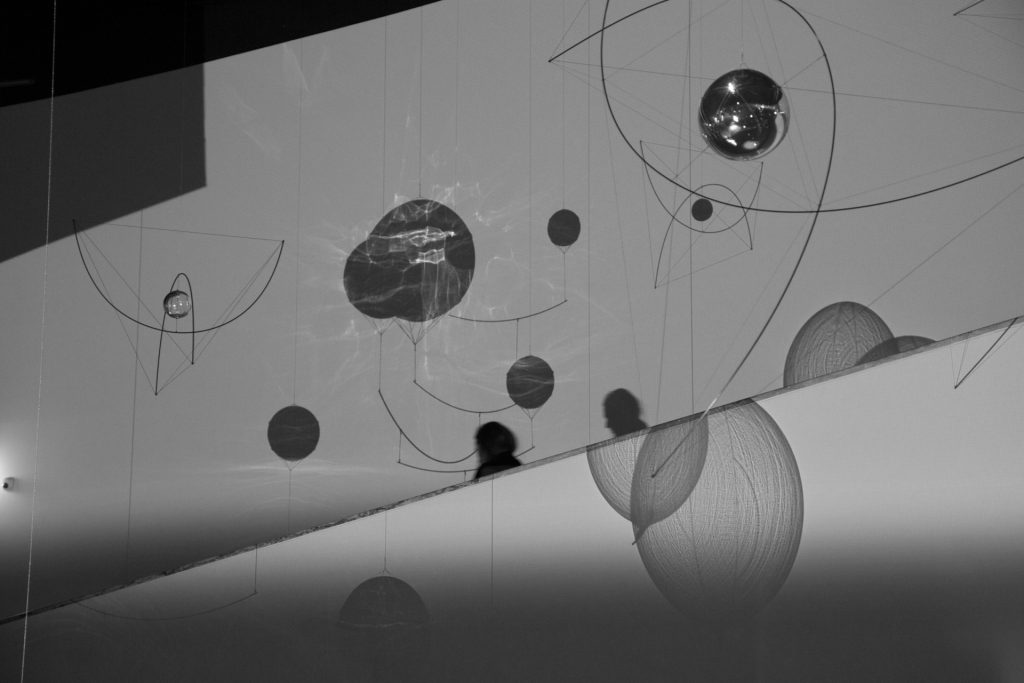
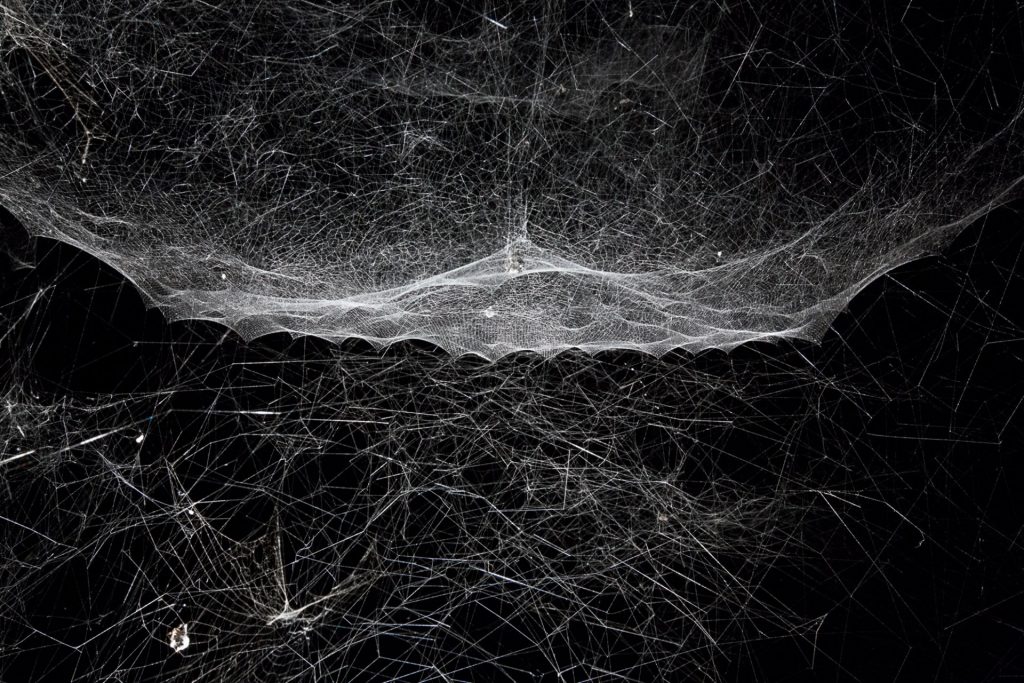
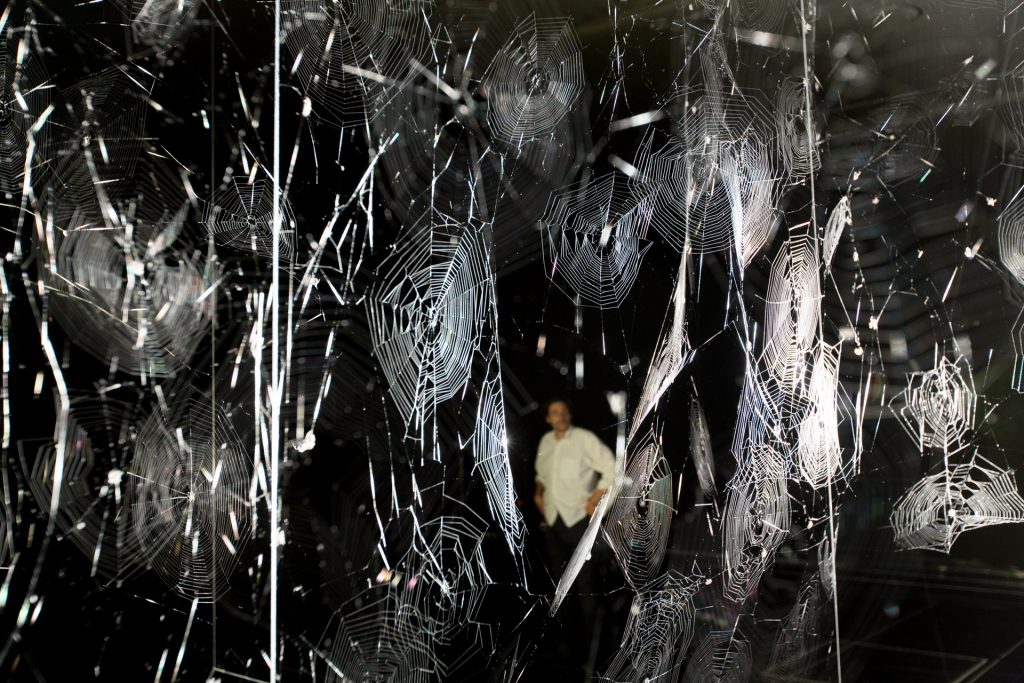
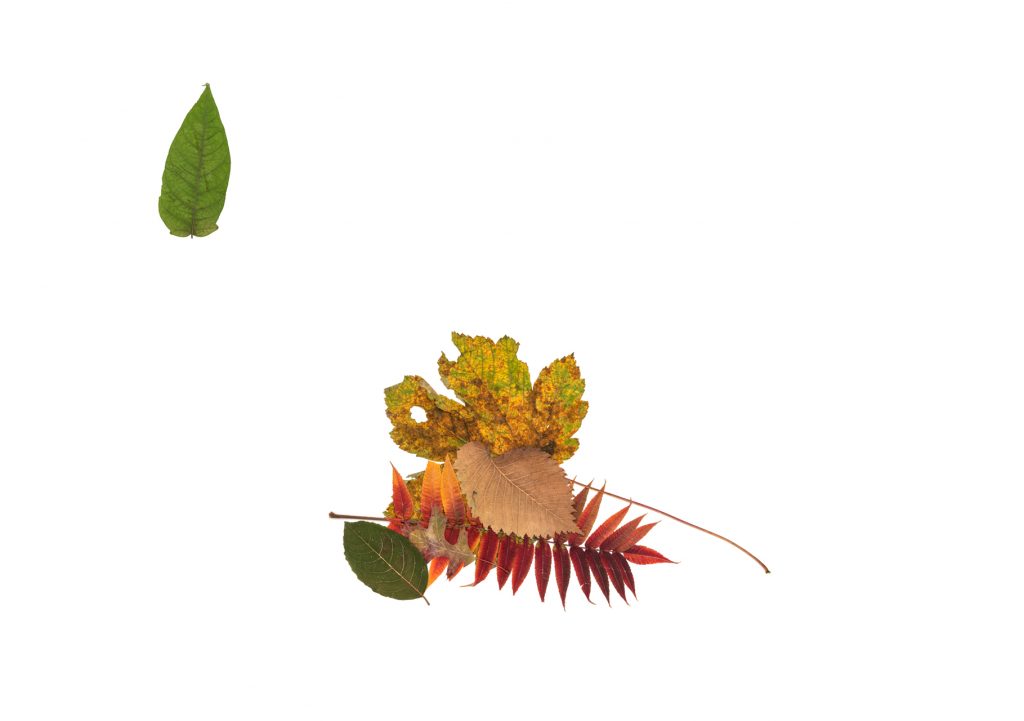
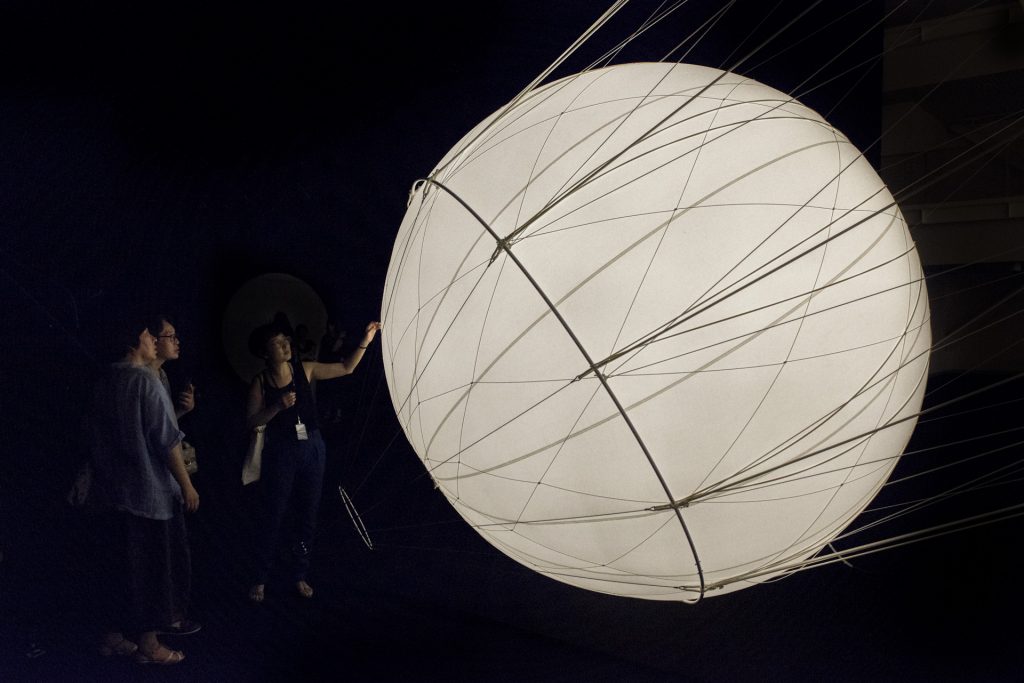
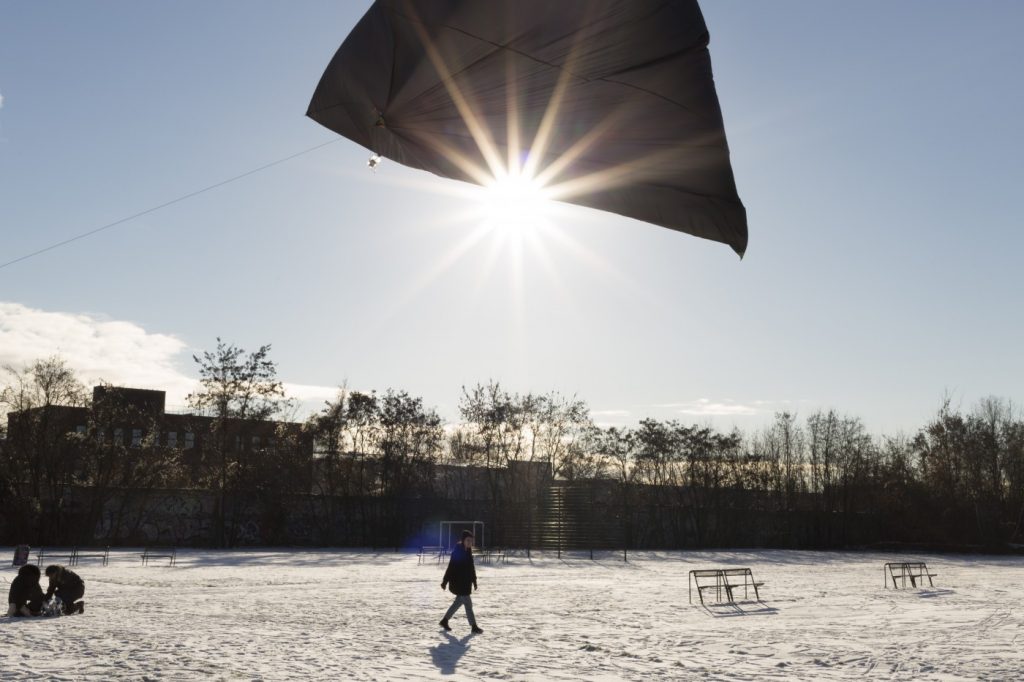
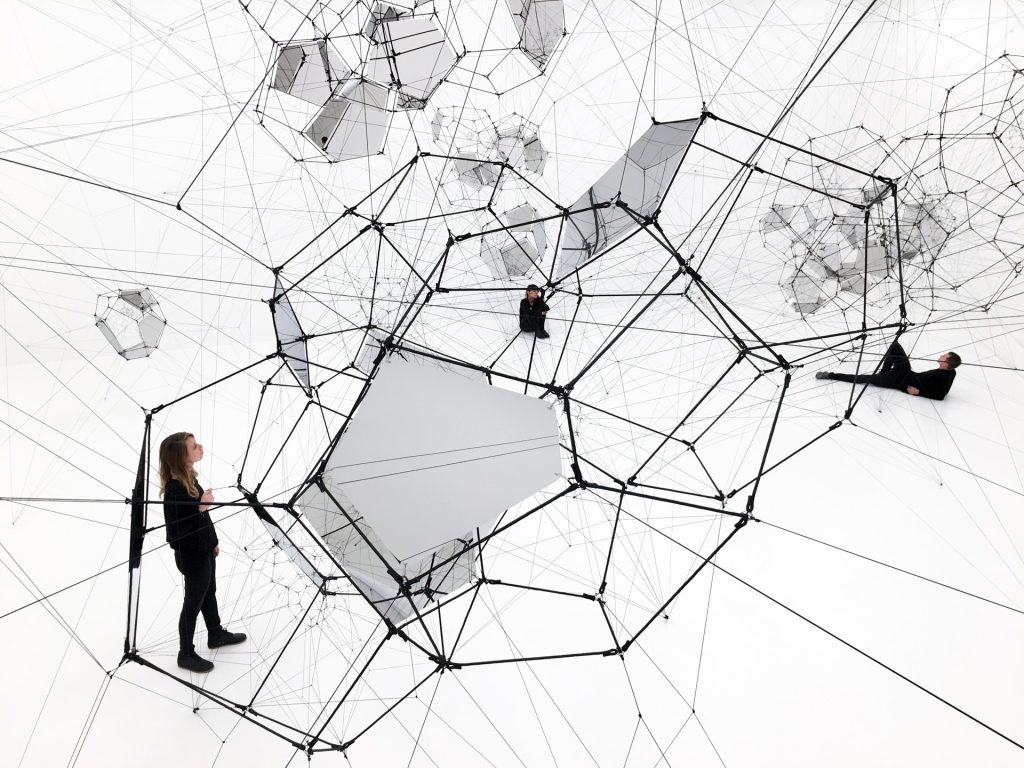
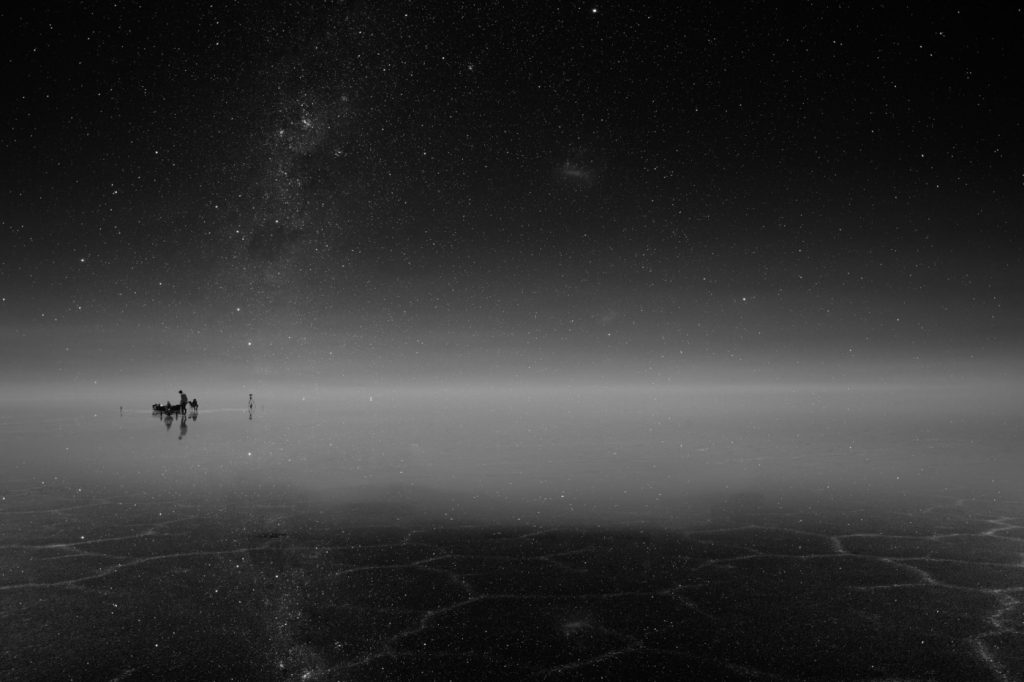
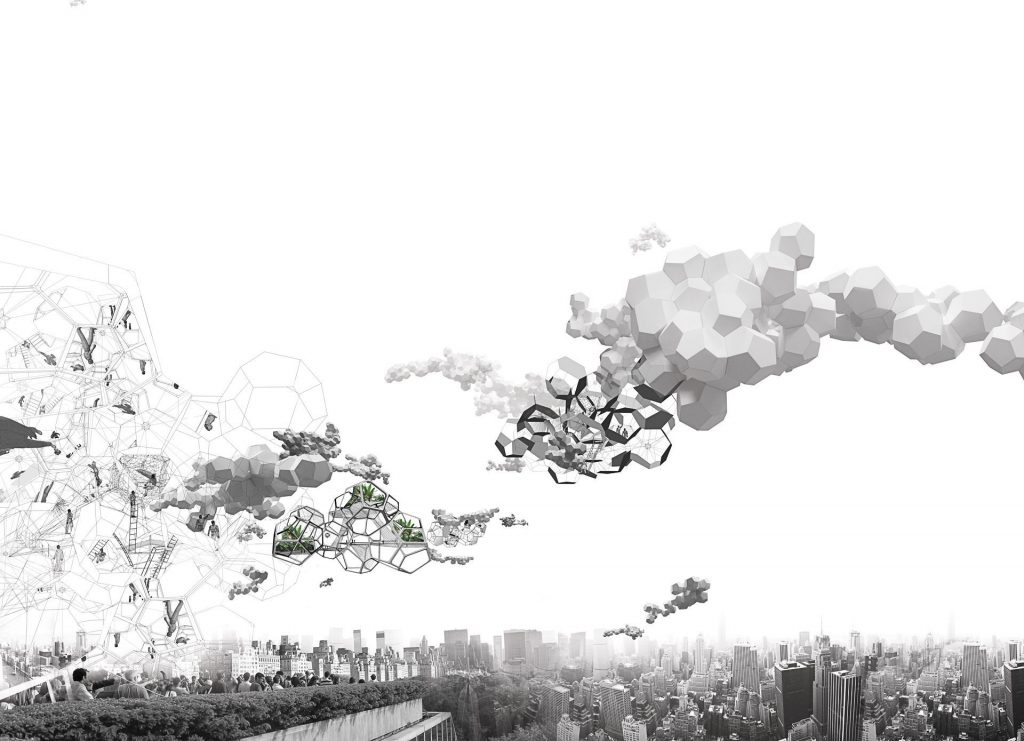
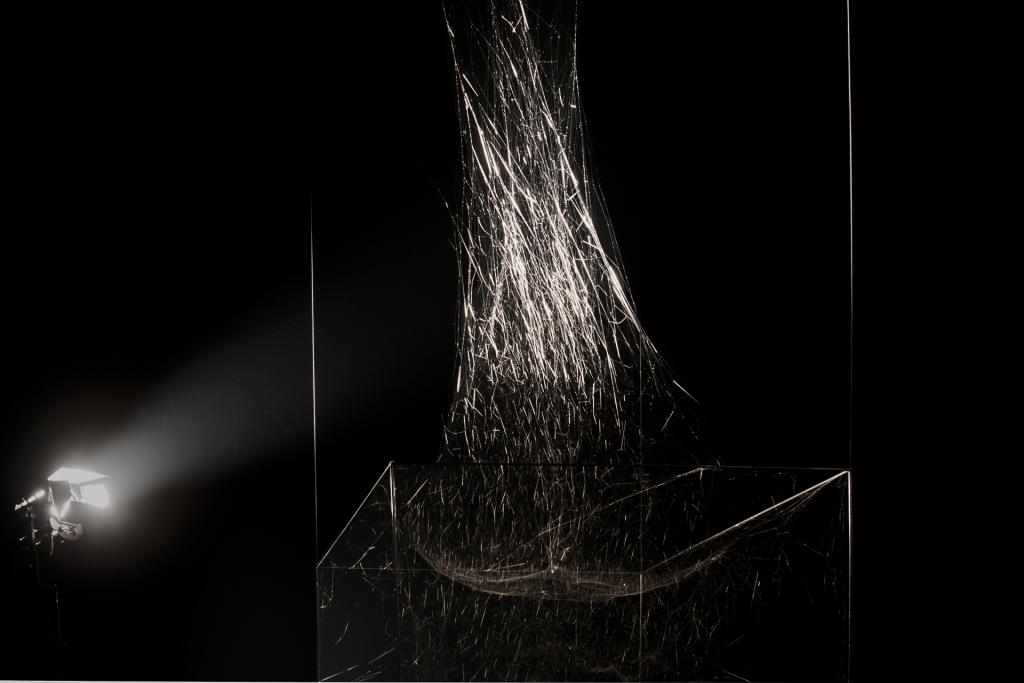
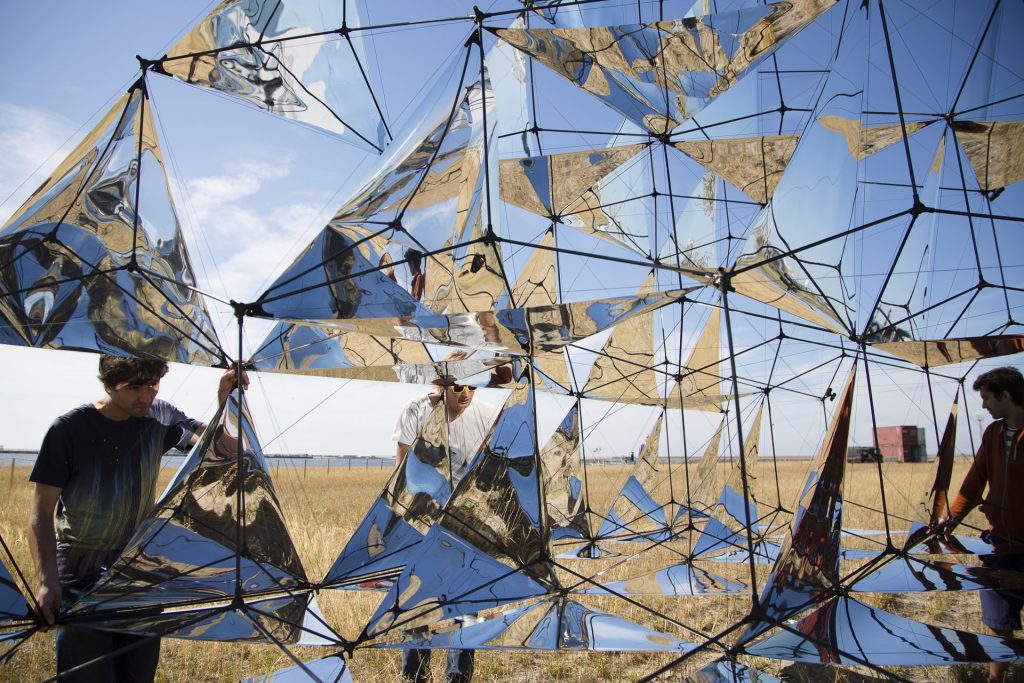
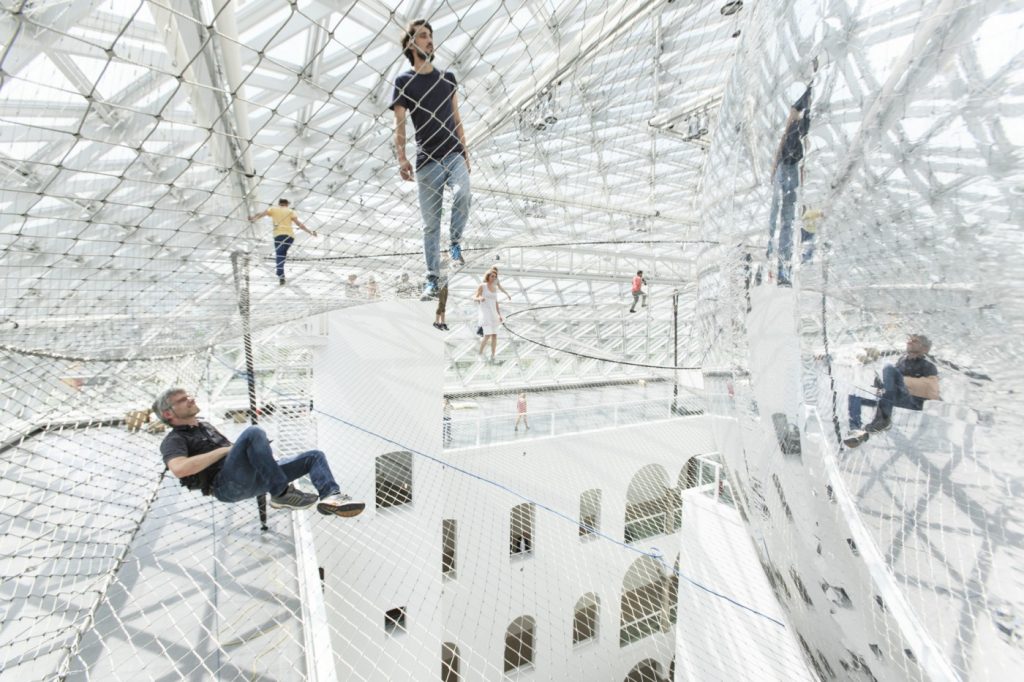
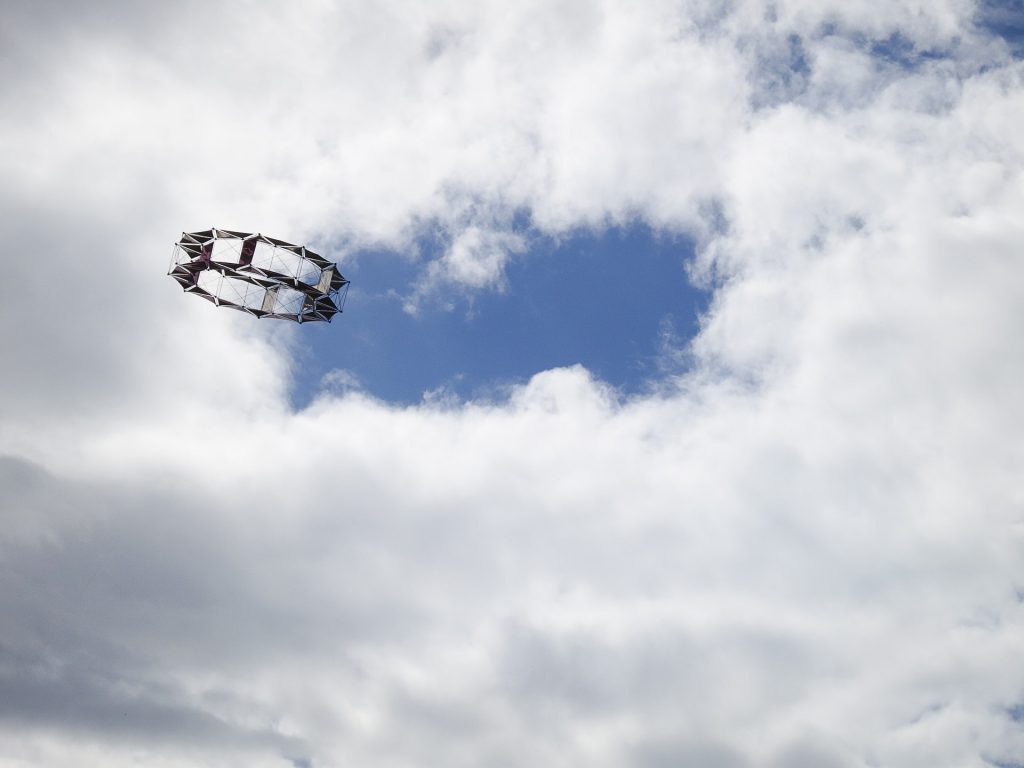
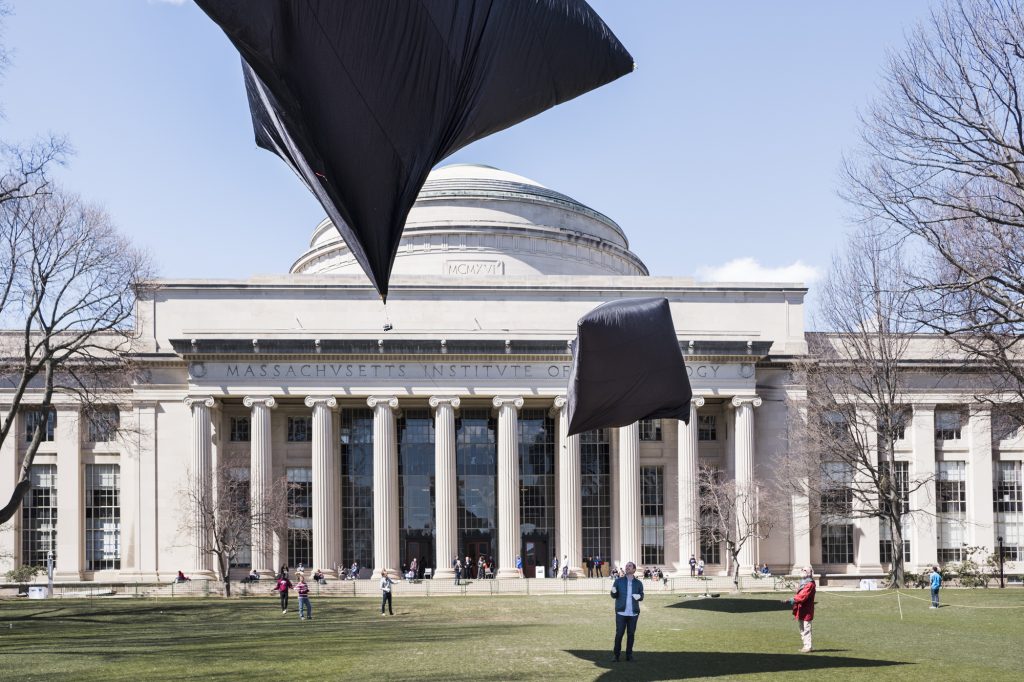
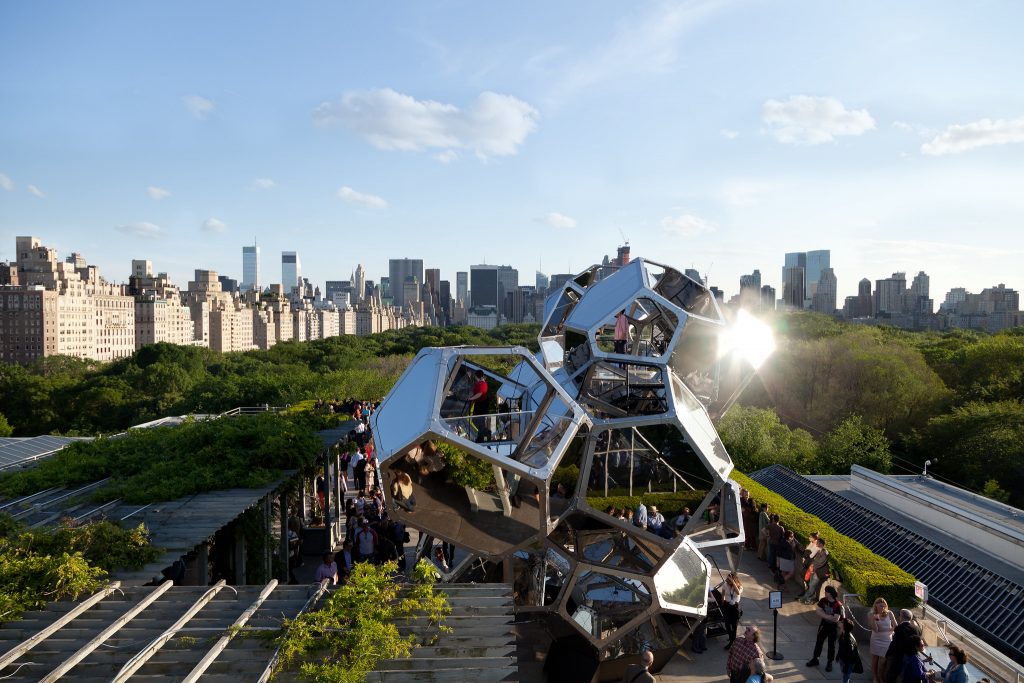
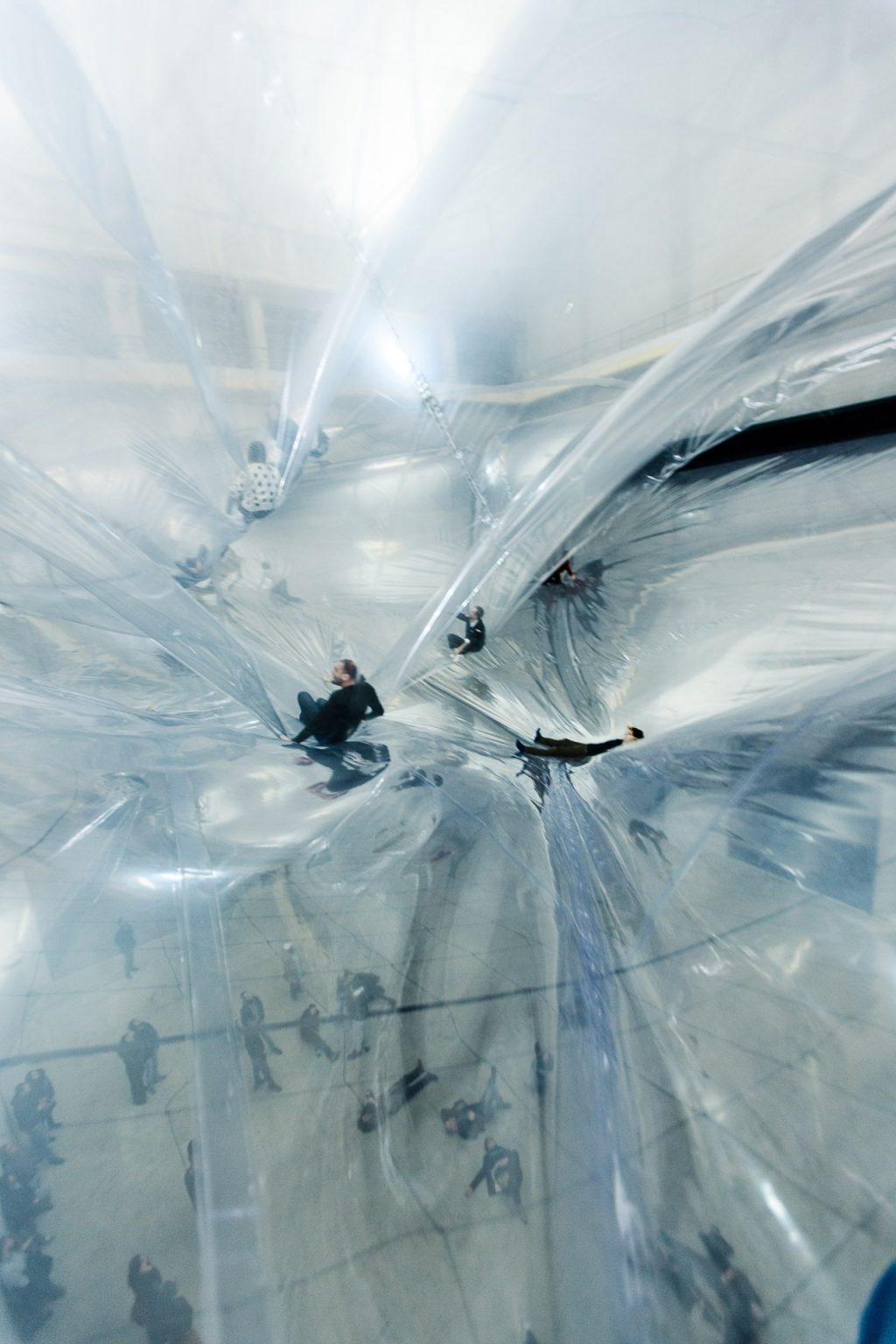
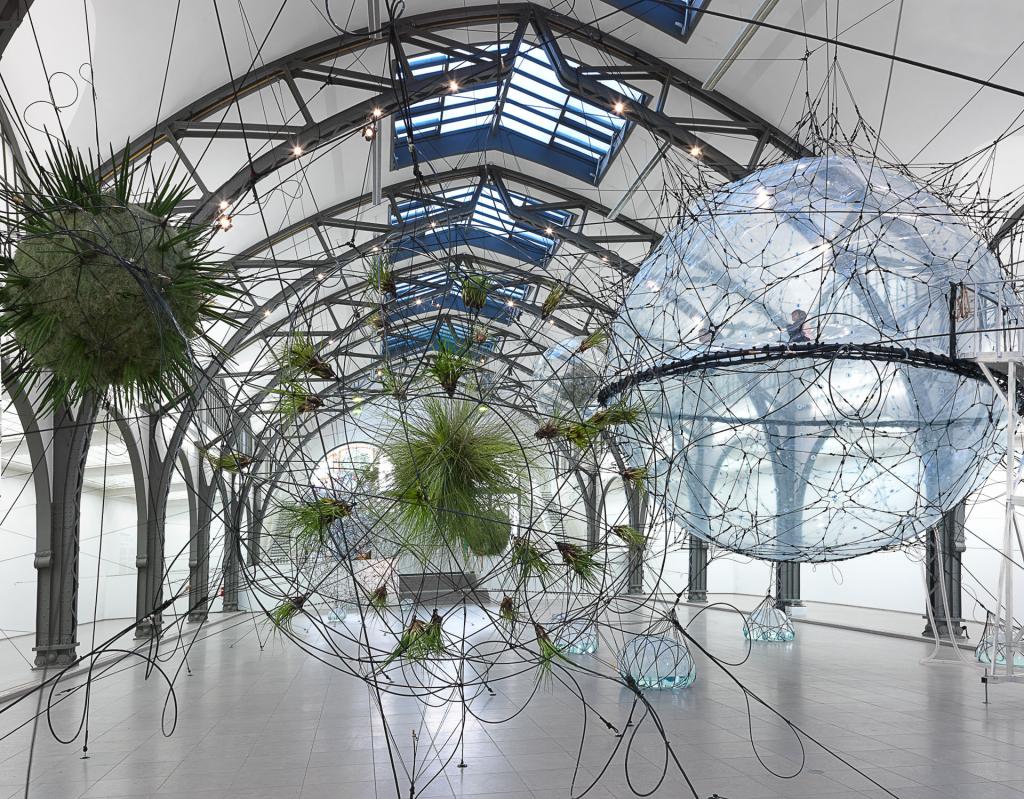
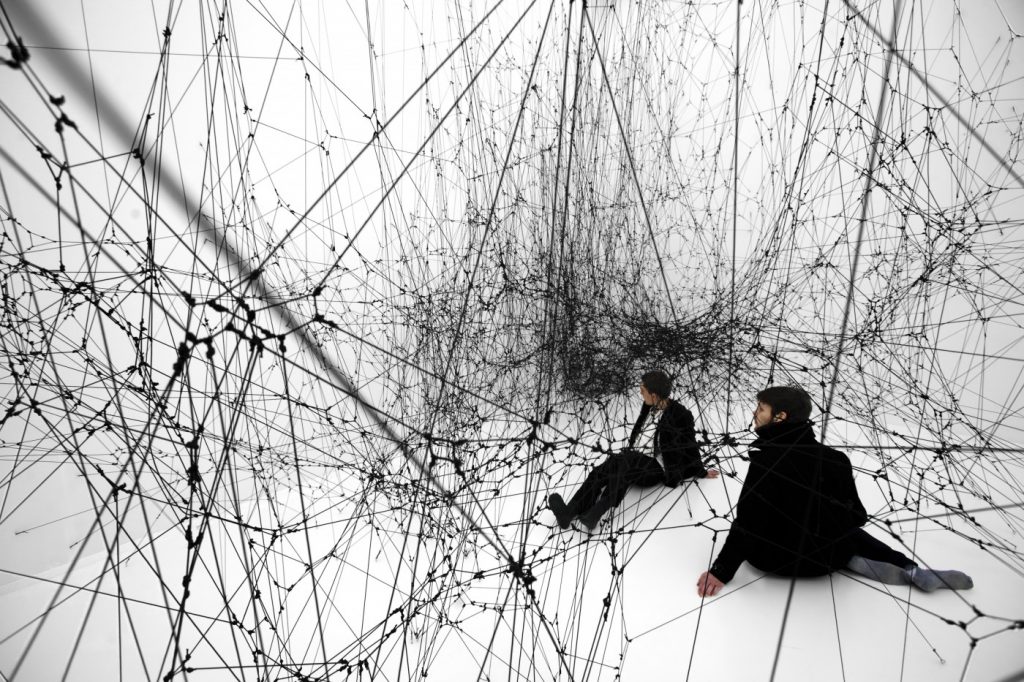
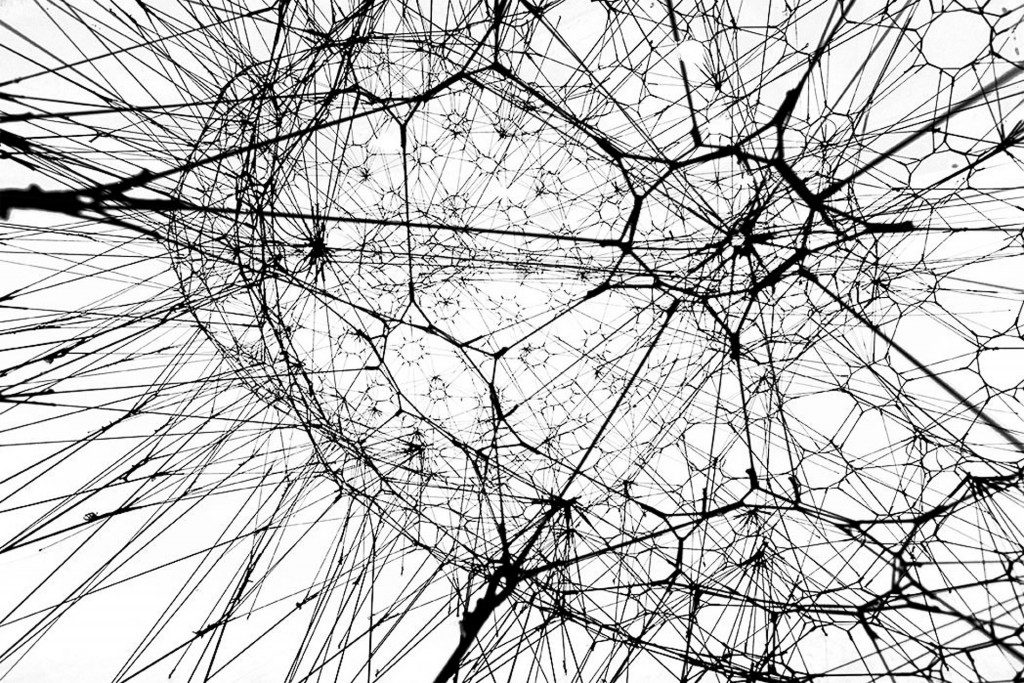
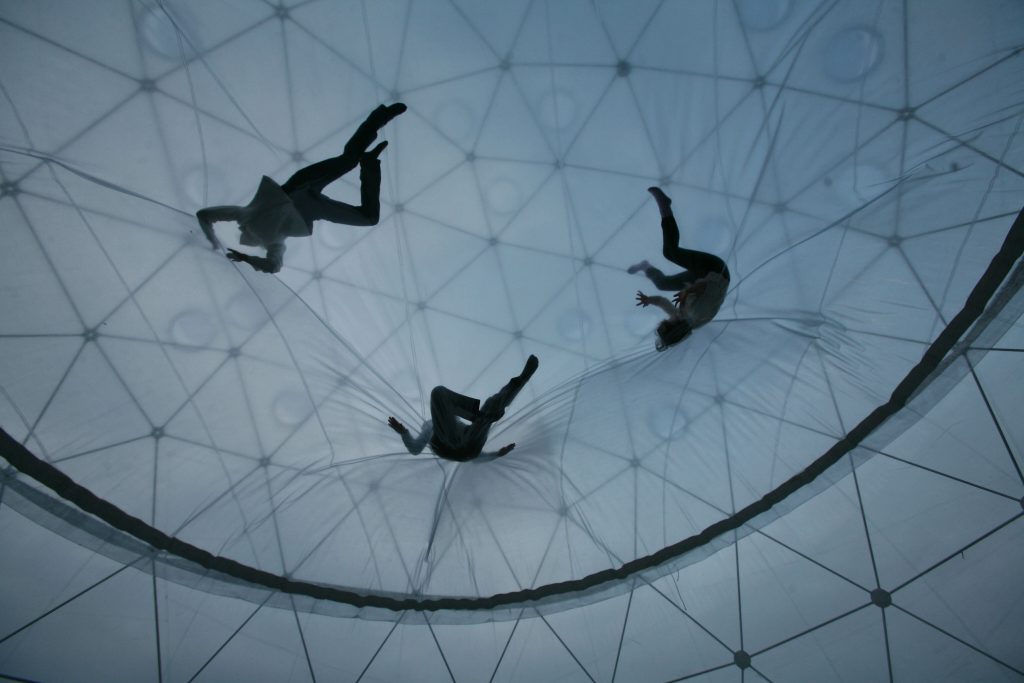
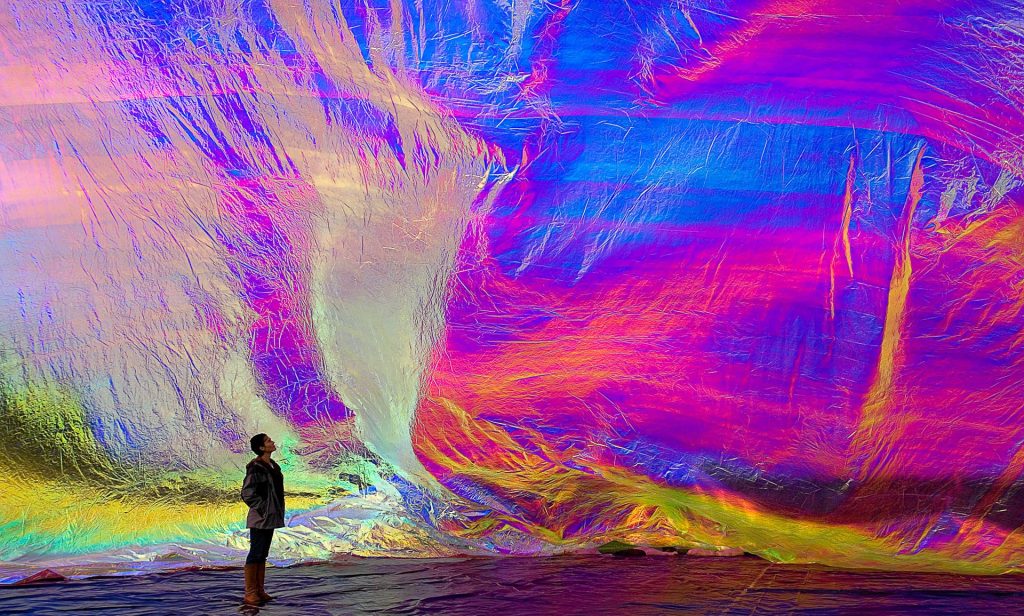



Saraceno is “a polymath on a mission. …His overarching goal might be summed up simply as getting humans to live right. This means getting them to understand that they are not the top of a pyramid of power in what is called the Anthropocene era, but exist on a horizontal plane with all non-humans, to which they should be sensitized and from which they have plenty to learn. And they exist in what Saraceno prefers to call the Aerocene era in which interspecies-cooperation and clean air are required.”
– Roberta Smith, New York Times
First Movement
In the main exhibition space Particular Matter(s) brings together
artworks that invite participants to consider more closely the world they co-inhabit—or have been excluded from, or suffered harm from— channeling funds and attention toward groups that enable a discovery of the interwoven rhythms of the planet. It argues for a freedom of knowledge from capitalist interests, advocating instead for the cultivation of situated knowledge—or the recognition of knowledge as context-dependent, defined by the specific position and perspective of a knower—across space, time, and species.
The beings to whom Saraceno turns our attention, including spiders and their webs, have been disregarded by the humans of the Capitalocene, a name for the era of Earth’s existence characterized by the destructive effects of capitalism on the environment. In a call for environmental justice, Saraceno collaborates with and contributes to communities and species that have been impacted by these negative effects in solidarity with Earth, the air, and the cosmos, particularly as part of the open-source community projects Aerocene and Arachnophilia.


“Here the showstopper was “Particular Matter(s)” (2021), the Shed exhibition’s title work, in which a beam of light shining in a darkened room reveals the omnipresent dust particles endlessly floating through the air we breathe. Some of it is cosmic dust, and some is human-made dust. Then there are the PM 2.5 particles, which include black carbon emissions from burned fossil fuels. Measuring 2.5 microns or less in diameter, they can be absorbed into the lungs and bloodstream. (A micron is about one-thousandth of a millimeter.) The luminescent column of light sparkles with glittering specks. “People come to me and say, ‘What did you put in the air?’” Saraceno remarked. “They can’t believe it is just the dust” that already exists all around us.”
– Arthur Lubow, T Magazine of the New York Times

In partnership with Columbia University’s Climate School and Studio Tomás Saraceno, The Shed presents a series of six moderated conversations
to explore key issues around climate change and environmental justice, while identifying connections with artworks in the exhibition.
Access the conversations offered both in person at The Shed and online for free here!
An Outlook on Particular Matter(s)
Thursday, February 10
A presentation and contextualization of the exhibition and its goals and themes, featuring artist Tomás Saraceno, the exhibition’s curator Emma Enderby, and The Shed’s Senior Program Advisor Hans Ulrich Obrist.
Environmental Justice and Covid-19
Wednesday, February 16
Opening with Saraceno’s artwork We Do Not All Breathe the Same Air, a newly commissioned work inspired by the research of Harriet A. Washington, this discussion will be framed by questions of environmental justice within the context of the pandemic. How do these crises intersect? How can we generate the urgency needed to raise awareness and gain traction around environmental crises and their disparate effects on Black, Brown, and lower socioeconomic populations around the world? Featuring Harriet A. Washington, leader in environmental racism discourse; Peggy Shepard, Co-founder and Executive Director of WEACT; Linda Goode Bryant, filmmaker and activist; and moderator Courtney Cogburn, Associate Professor of Social Work, Columbia.
Capitalocene, Aerocene
Wednesday, March 2
An investigation of the role of capitalism and production in the climate crisis. How did we get here? What are the responsibilities of governments, corporations, and individuals? What potentialities for change can we think of with an Aerocene era? Featuring Andreas Malm associate professor of human ecology at Lund University, Sweden; Jason Moore, environmental historian and historical geographer at Binghamton University; Michael Marder, Ikerbasque Research Professor of Philosophy at the University of the Basque Country; Luisa Palacios, Senior Research Scholar at the Center on Global Energy Policy; and moderator Andrew Revkin, Director of Initiative on Communication Innovation and Impact, Columbia Climate School.
From arachnophobia to Arachnophilia
Wednesday, March 16
An exploration of interspecies interconnectedness and interdependence. What can we learn from situated knowledges? Featuring Eric-Paul Riege, artist; David Zeitlyn, Professor of Anthropology at Oxford University; Peggy Hill, Professor Emerita of Biological Science at The University of Tulsa; Markus Beuhler, materials scientist and engineer at the Massachusetts Institute of Technology; and moderator Cynthia Willett is the Samuel Candler Dobbs Professor of Philosophy at Emory University.
Invention, Experimentation, and Radical Imagination
Wednesday, March 30
A survey of artistic and scientific frameworks for research, experimentation, and theorizing that depend upon interdisciplinary collaboration to unlock meaning and potential paths forward, featuring the Aerocene community and era. How do we imagine possible just and safe futures from these perspectives? Featuring Kate Marvel, Associate Research Scientist at Columbia University; Caroline Jones, Professor in the History, Theory, and Criticism section, Department of Architecture, MIT; Molly Nesbit is a contributing editor at Artforum and a Professor of Art at Vassar College; and moderator Sandra Goldmark, Associate Professor of Professional Practice in Theatre and Director of Campus Sustainability and Climate Action at Barnard College.
Where Do We Go from Here? Rights of nature: Policy, Activism and Change
Wednesday, April 13
What are diverse, international approaches in regards to the rights of the air? In Salinas Grandes, Jujuy, Argentina, what are the rights of water? How can community or artistic actions, such as the flight of Aerocene Pacha, support environmentalism over capitalism around the world? Featuring Maristella Svampa, Argentine sociologist and Researcher at the Conicet (National Center for Scientific and Technical Research), Argentina and Professor at the Universidad Nacional de la Plata; Casey Camp-Horinek, a long-time Native rights activist, environmentalist and actress; Alicia Chalabe, community lawyer in Salinas Grandes; and moderator Michael Gerrard, advocate, litigator, teacher, scholar and founder and faculty director of the groundbreaking Sabin Center for Climate Change Law.
What is happening to my skin?
Where is that protection that I needed?
Air can hurt you, too; Air can hurt you, too.
It can break your heart …
– Talking Heads, “Air”. 1976.
...